
Saludos amigos y familia de mi bella comunidad Plant Power (Vegan). Siempre he creído y he comentado también, que una de las grandes ventajas de trabajar o publicar en comunidades gastronómicas, es que podemos enriquecer nuestro conocimiento acerca de la comida mundial. Bien sea porque leemos publicaciones de otras personas, quienes nos muestran los platillos de sus respectivos países, o bien sea porque tenemos la posibilidad de investigar recetas, de ir más allá de nuestras fronteras, investigar y tratar de emular (dentro de nuestras posibilidades), recetas que son desconocidas para nosotros. Esto nos permite enriquecer nuestros blogs y aprender nuevas técnicas culinarias y familiarizarnos con otros ingredientes.
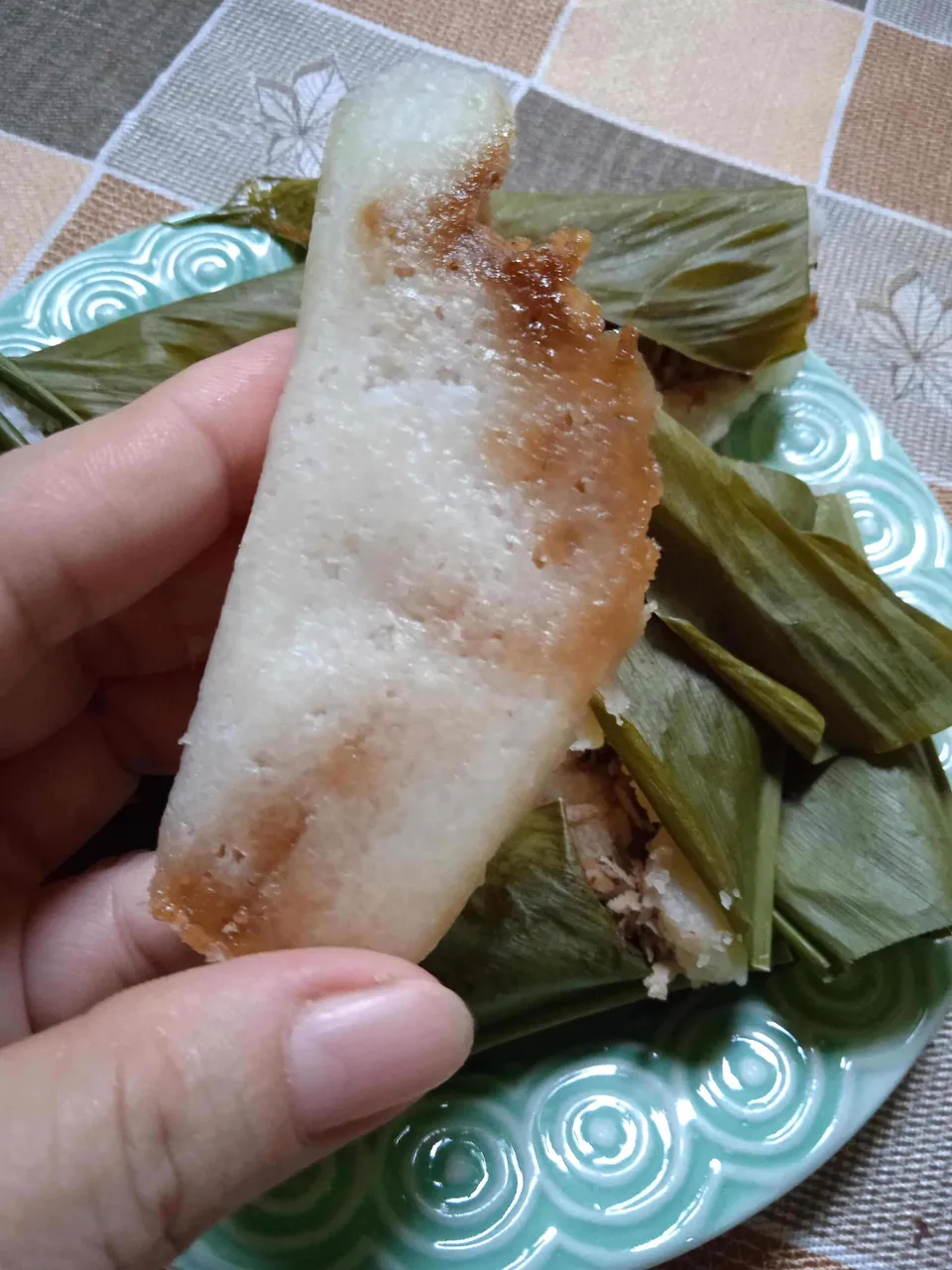

Yo suelo aplicar esta premisa, por eso leo, investigo y veo videos de cocineros y ciudadanos de otros países y continentes, e intento replicar estas recetas en mi hogar; ya sean veganizadas o no, así que cuando tengo posibilidades, hago recetas que nunca antes he comido o he elaborado. Y en esa búsqueda me topé con un curioso snack hindú, el cual lleva por nombre PATOLI, y quise hacerlo por primera vez, porque uno de los ingredientes que lleva, es la cúrcuma, y como ya saben, yo siembro cúrcuma en mi hogar. ¡Vamos entonces a ver esta interesante receta!

THE RECIPE / LA RECETA
Preparation time: This recipe takes about 35 minutes to prepare, assuming you have the ingredients to hand.
Servings: I made 9 patolis with this mixture, but this may vary depending on the size of your patolis.
3 fresh turmeric leaves (this may vary depending on the size of the leaves).
1 cup of rice flour. I made the flour by grinding the rice in the mixer, but I recommend using the ready-made flour, as grinding the rice in the mixer does not give a clean result.
¾ cup of water.
1 pinch of salt
½ cup freshly grated coconut. I used desiccated coconut as I didn't have fresh coconut, but fresh coconut is ideal.
2 tablespoons of piloncillo or grated brown sugar
¼ teaspoon of finely grated sarrapia or tonka. The original recipe does not call for sarrapia, but for cardamom seed powder.
1 teaspoon of margarine. The original recipe contains ghee.
1 teaspoon of vegetable oil (to oil the turmeric leaves).
Enough water to wash the leaves and steam the patoli.
Bowl, cauldron, measuring cups, spoons, plates, napkins, a steamer or tamalera, etc. .
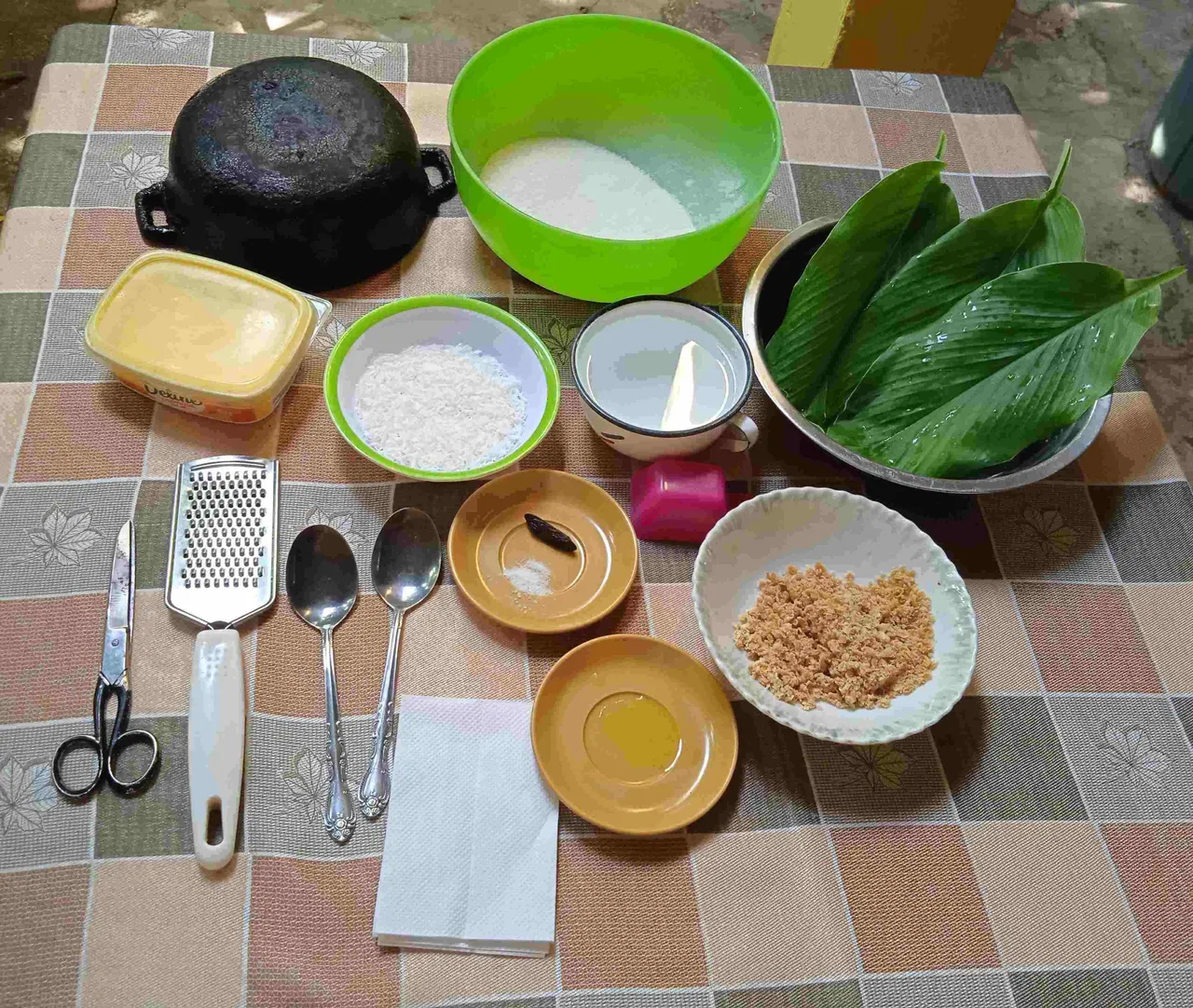
Tiempo de preparación: Esta receta requiere de un tiempo aproximado de elaboración, de 35 minutos, siempre y cuando tengas los ingredientes a mano.
Raciones: Con esta mezcla obtuve 9 patolis, pero esto puede variar de acuerdo a su tamaño.
3 hojas frescas de cúrcuma (esto puede variar de acuerdo al tamaño de las hojas).
1 taza de harina de arroz. Yo elaboré la harina moliendo arroz en la licuadora, pero recomiendo usar la harina que ya viene elaborada, ya que el resultado al moler el arroz en licuadora, no es tan prolijo.
¾ de taza de agua.
1 pizca de sal.
½ taza de coco fresco rallado. Yo usé coco desecado, pues no tenía coco fresco, pero lo ideal es usar coco fresco.
2 cucharadas de piloncillo o jaggery rallado.
¼ de cucharadita de sarrapia o tonka finamenta rallada. La receta original no incluye sarrapia, sino polvo de semillas de cardamomo.
1 cucharadita de margarina. La receta original incluye ghee.
1 cucharadita de aceite vegetal (para aceitar las hojas de cúrcuma).
Agua suficiente para lavar las hojas y para cocinar al vapor los patoli.
Bol, caldero, tazas medidoras, cucharillas, platos, servilletas, una olla vaporera o tamalera, etc.

Colocar la margarina en el caldero, luego añadir el coco rallado y el jaggery o piloncillo. Remover, tapar y llevar a fuego bajo por 8 minutos aproximadamente. Remover ocasionalmente para evitar que se queme esta mezcla.
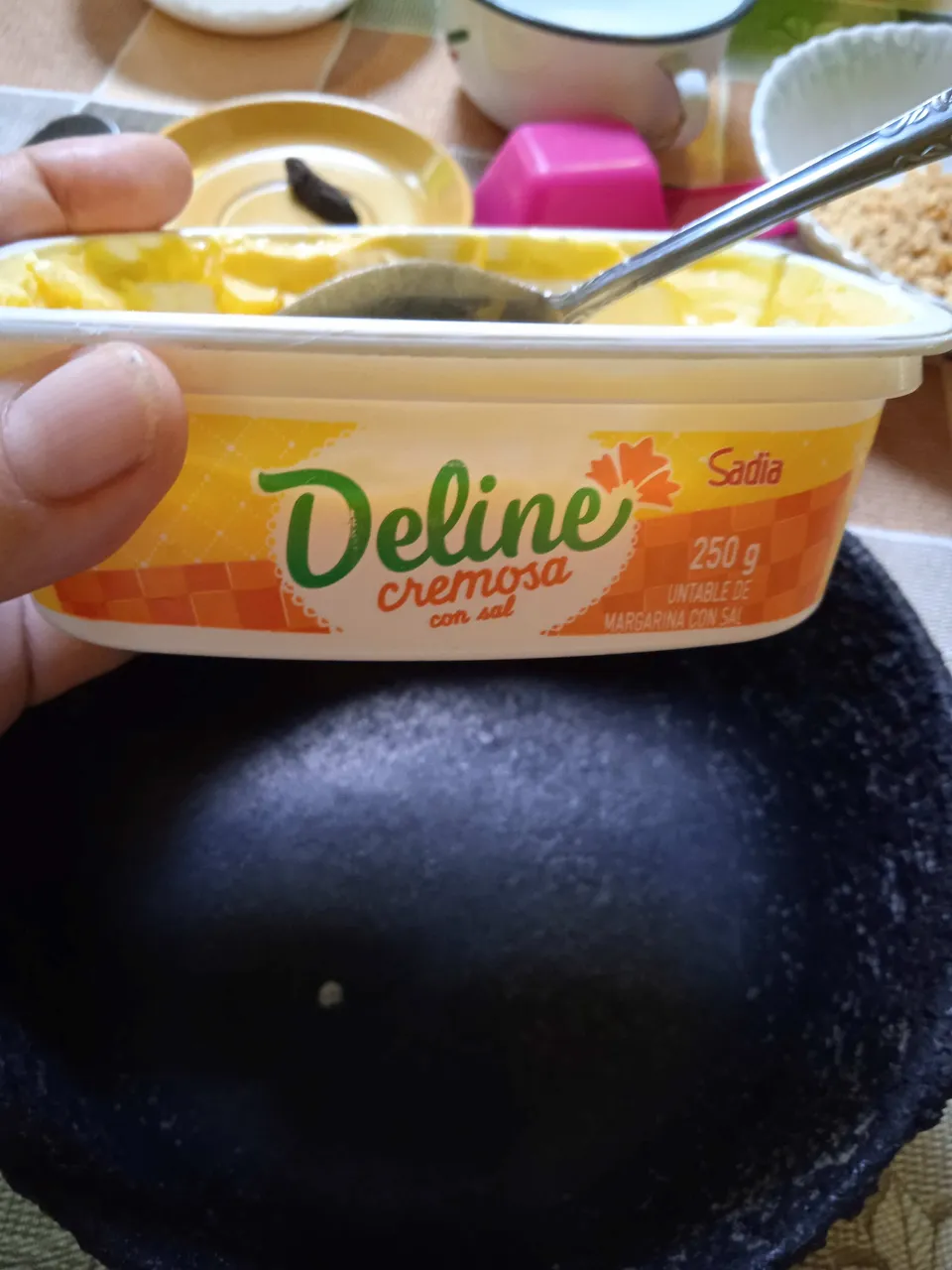
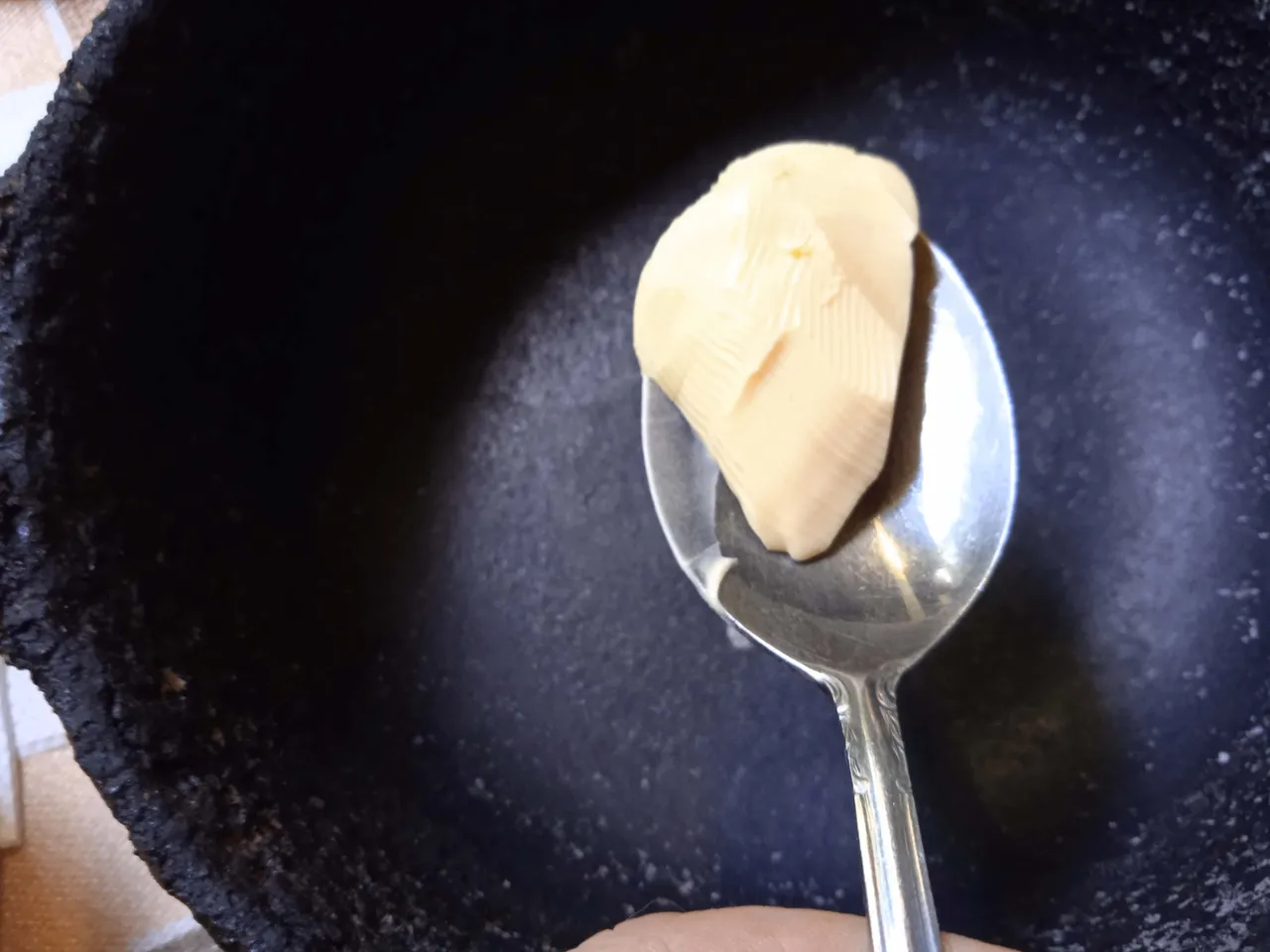

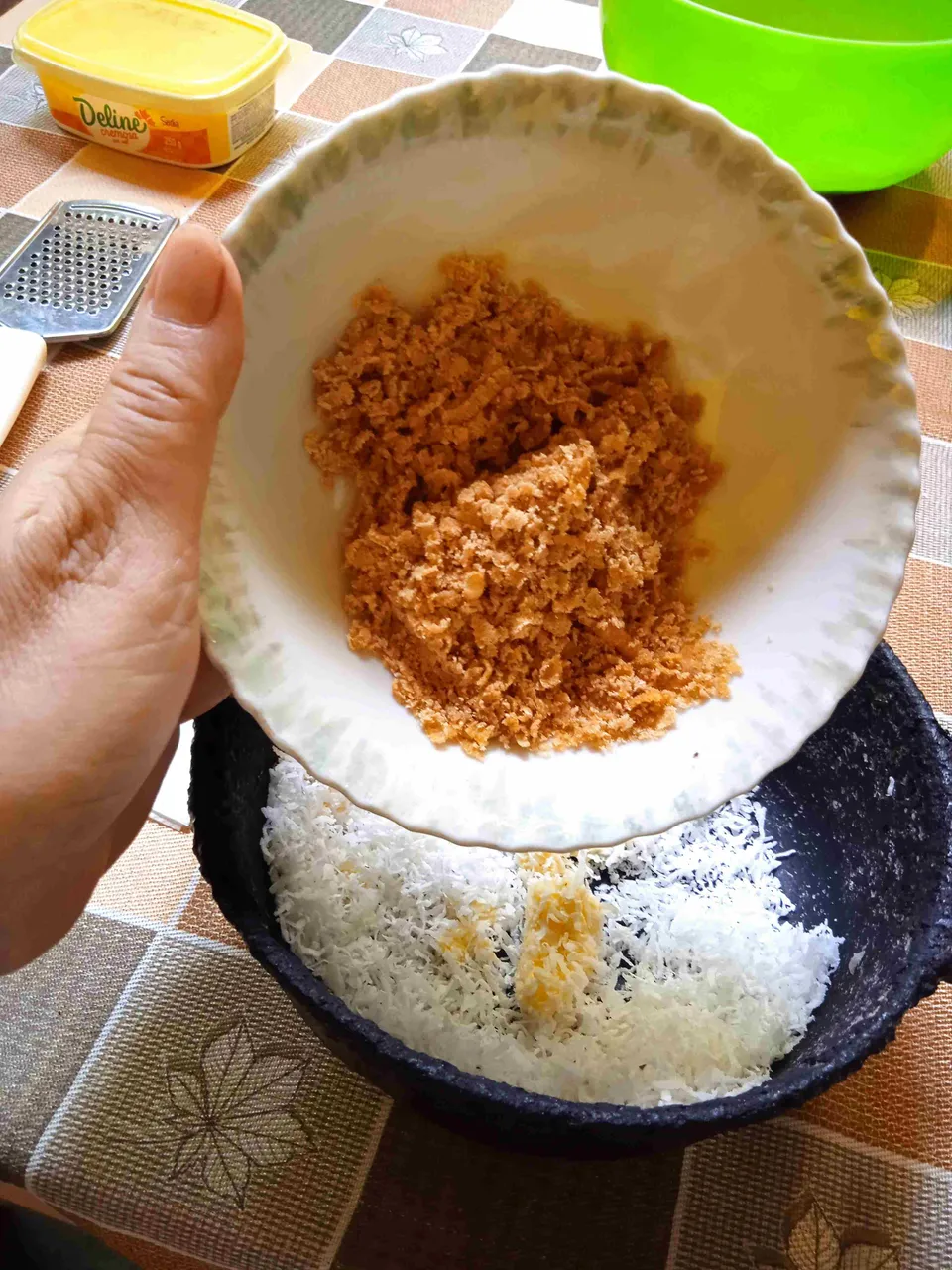


A continuación, añadir la pizca de sal a la harina de arroz, y luego adicionar progresivamente el agua mientras se mezcla con una cuchara. Reservar.

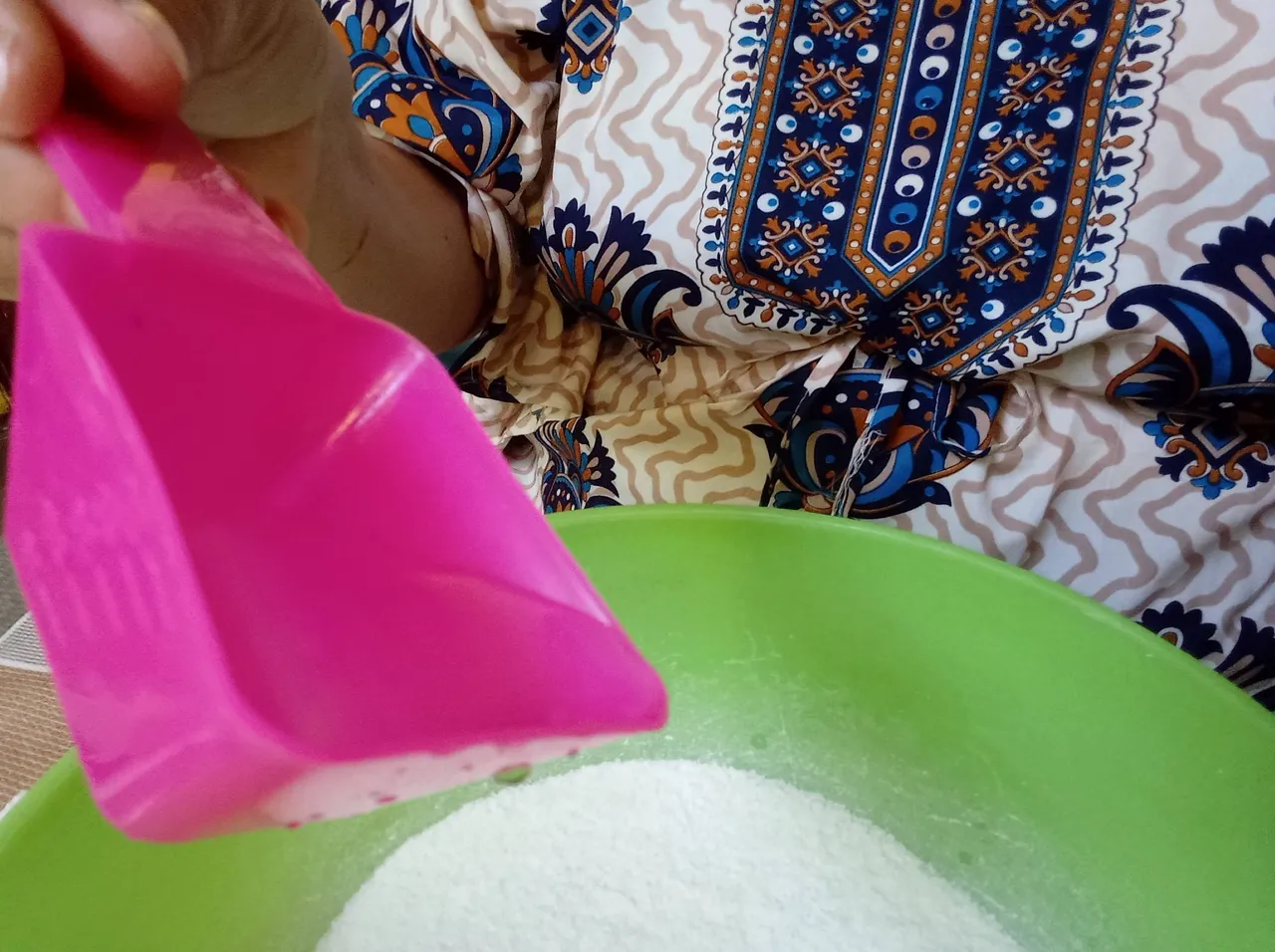
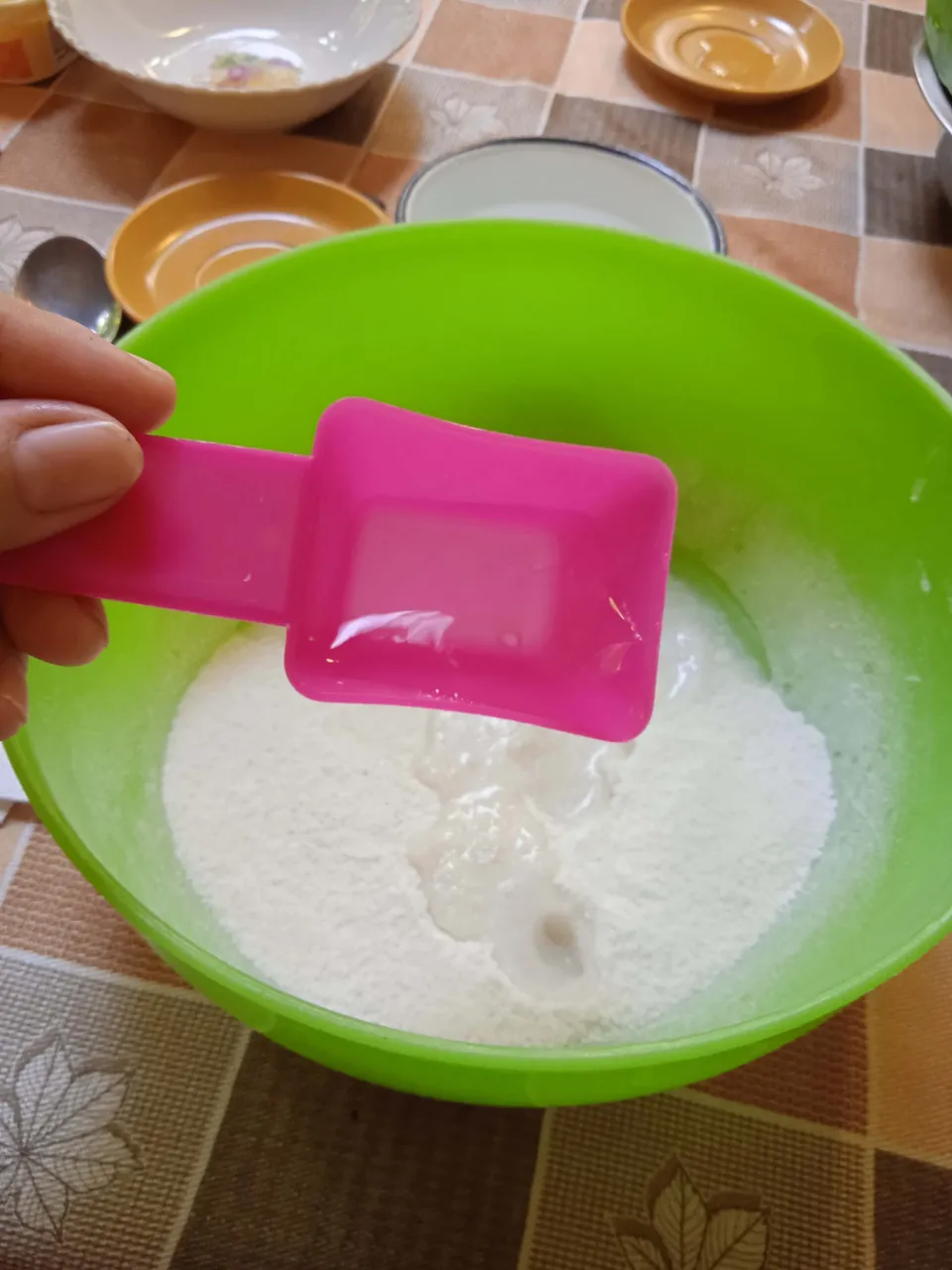
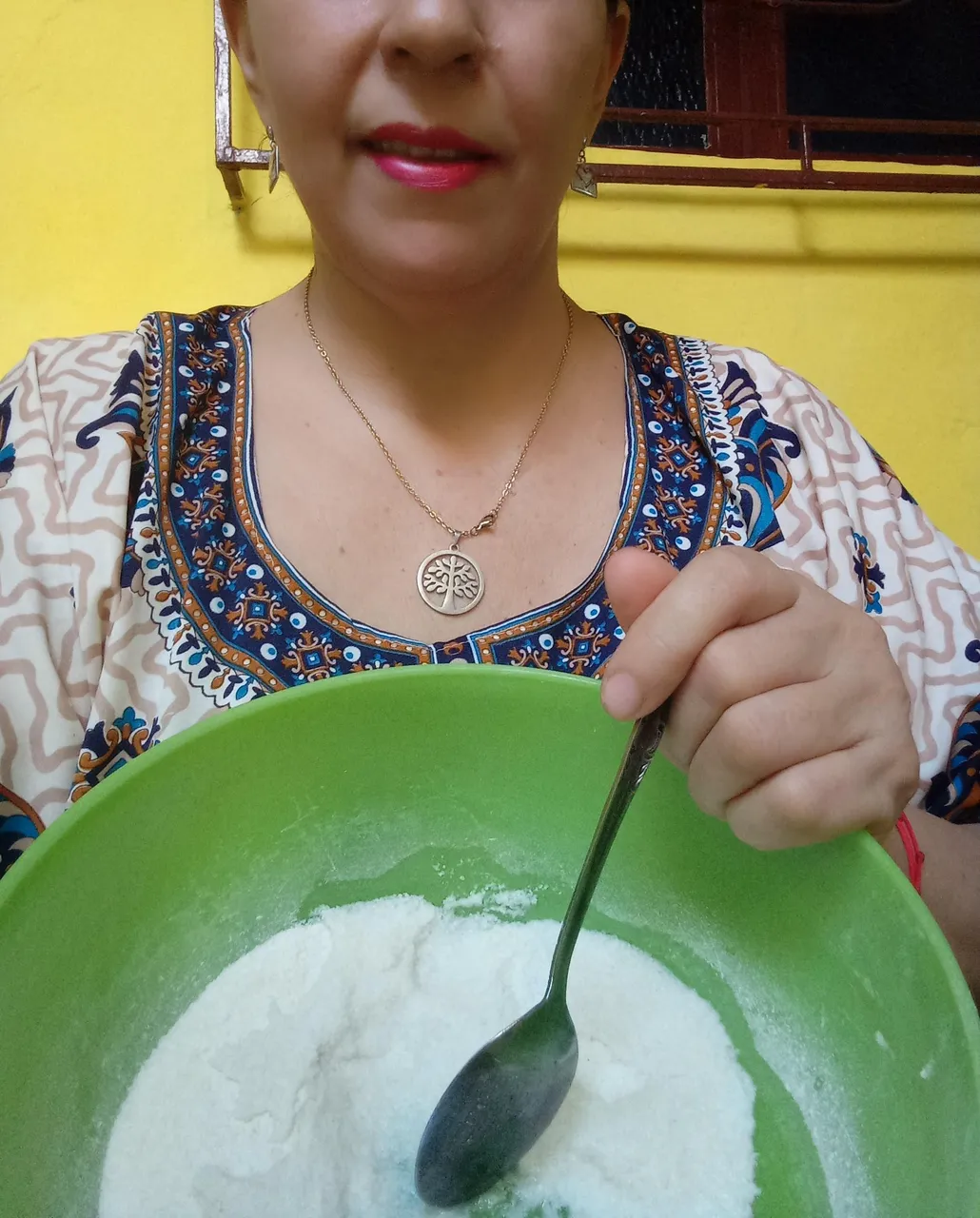
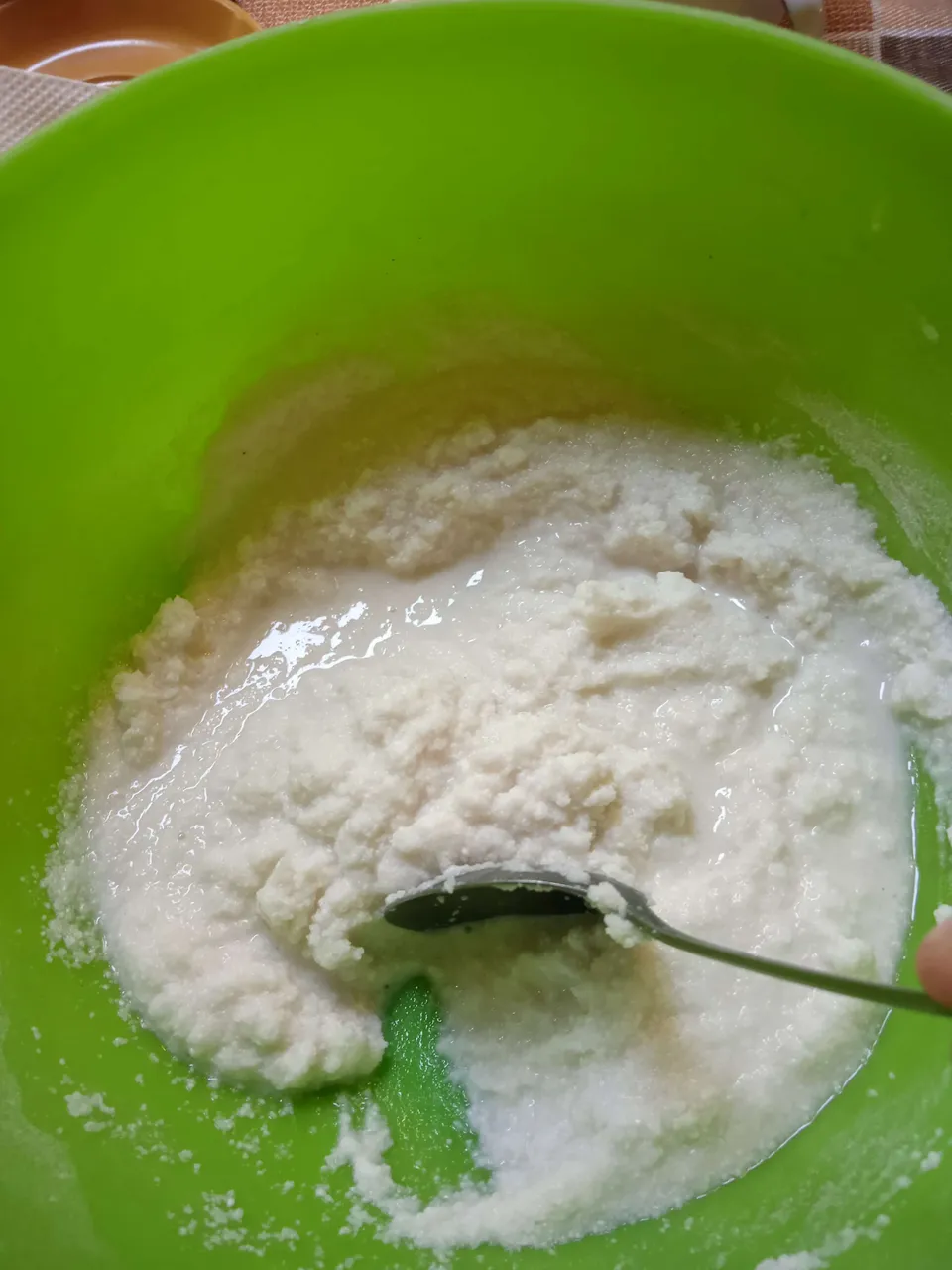

Rallar finamente la semilla de sarrapia o tonka, para luego añadirla a la mezcla de coco con piloncillo. Remover y seguir cocinando a fuego bajo. Lo ideal es usar polvo de cardamomo. Yo fui a comprar a la tienda de especias y no encontré, por eso me decanté por la sarrapia.
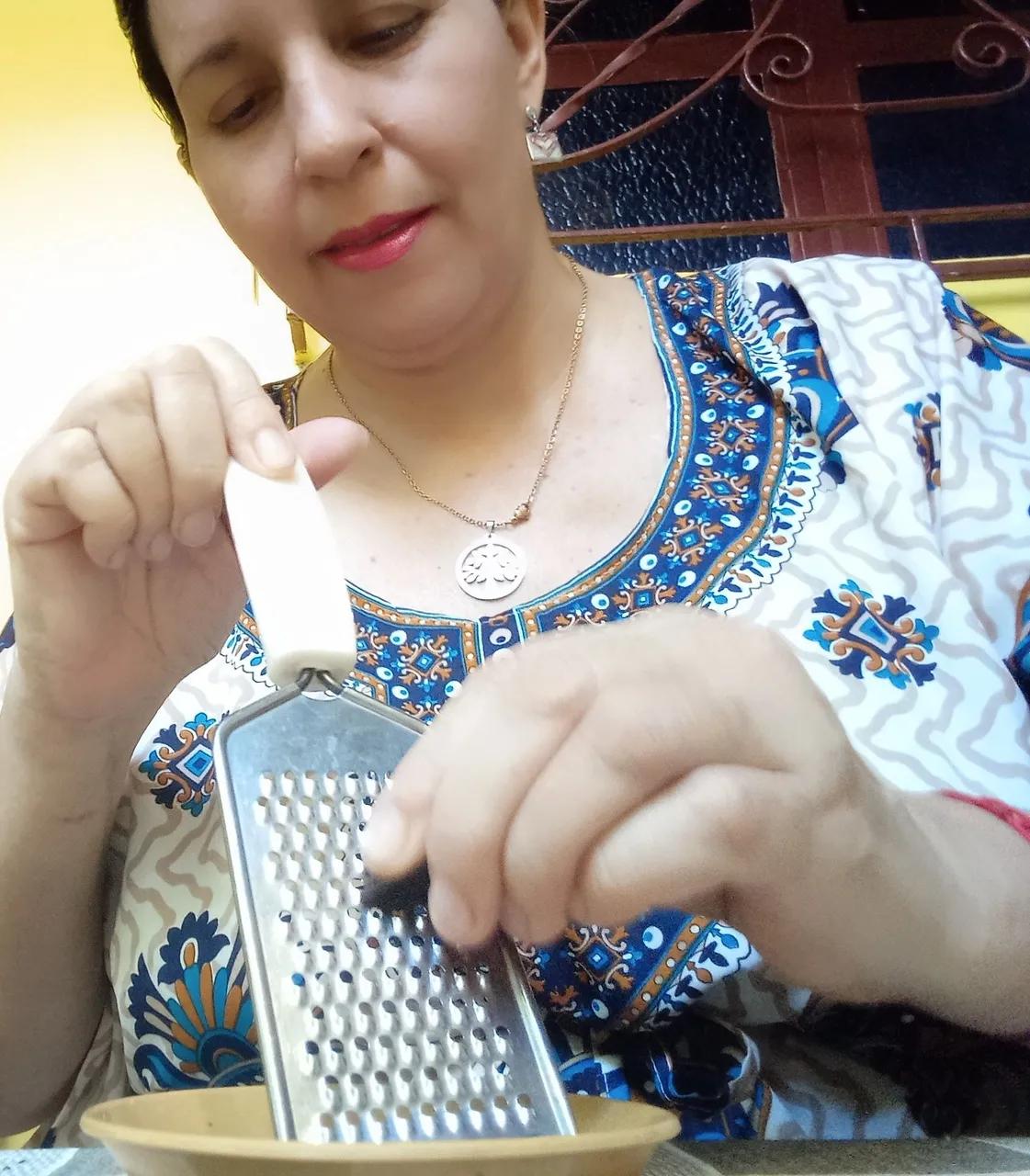

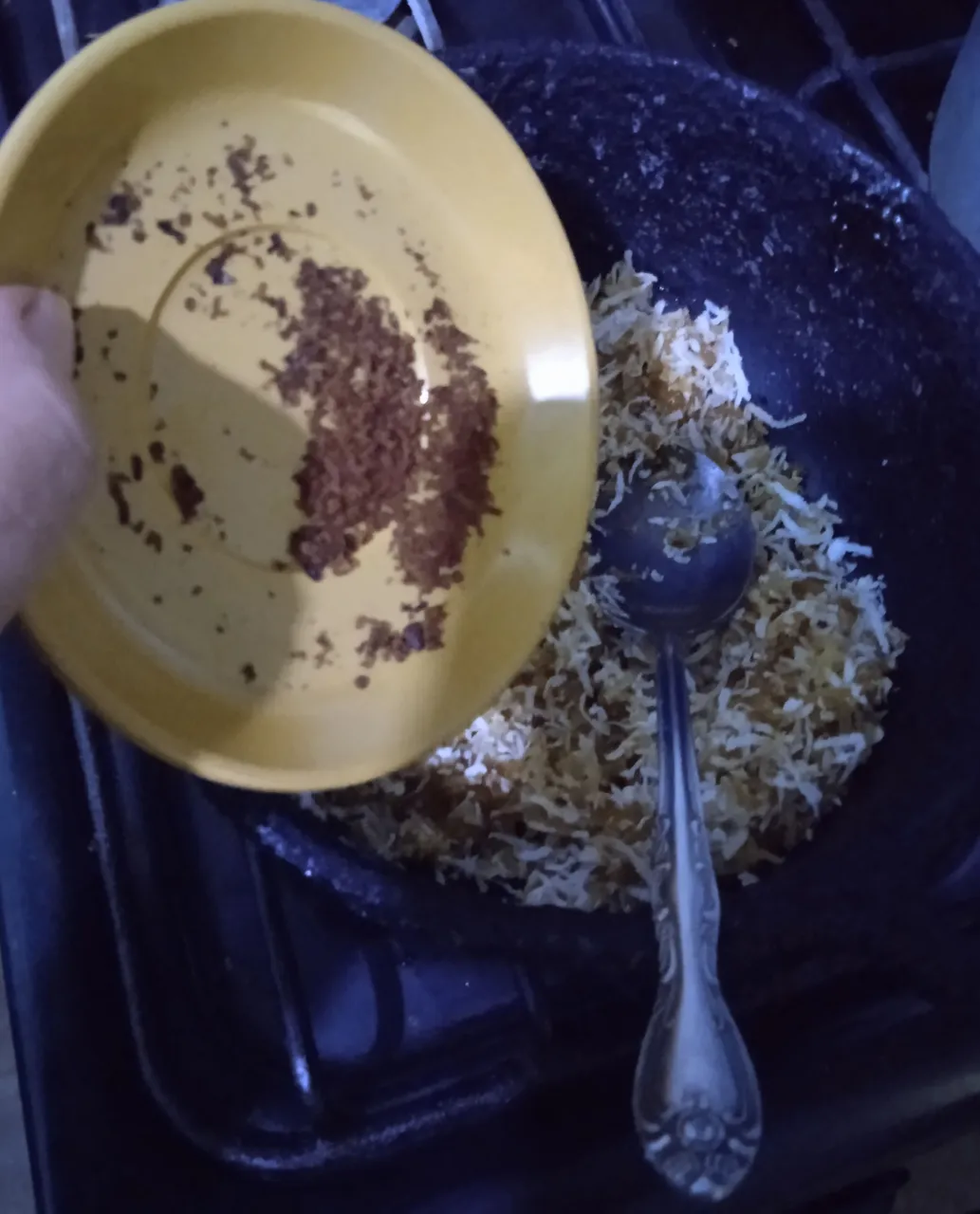

Ya teniendo las hojas de cúrcuma limpias, se procede a cortarlas. Estas las dividí en tres partes, y a cada hoja le eliminé el pecíolo.
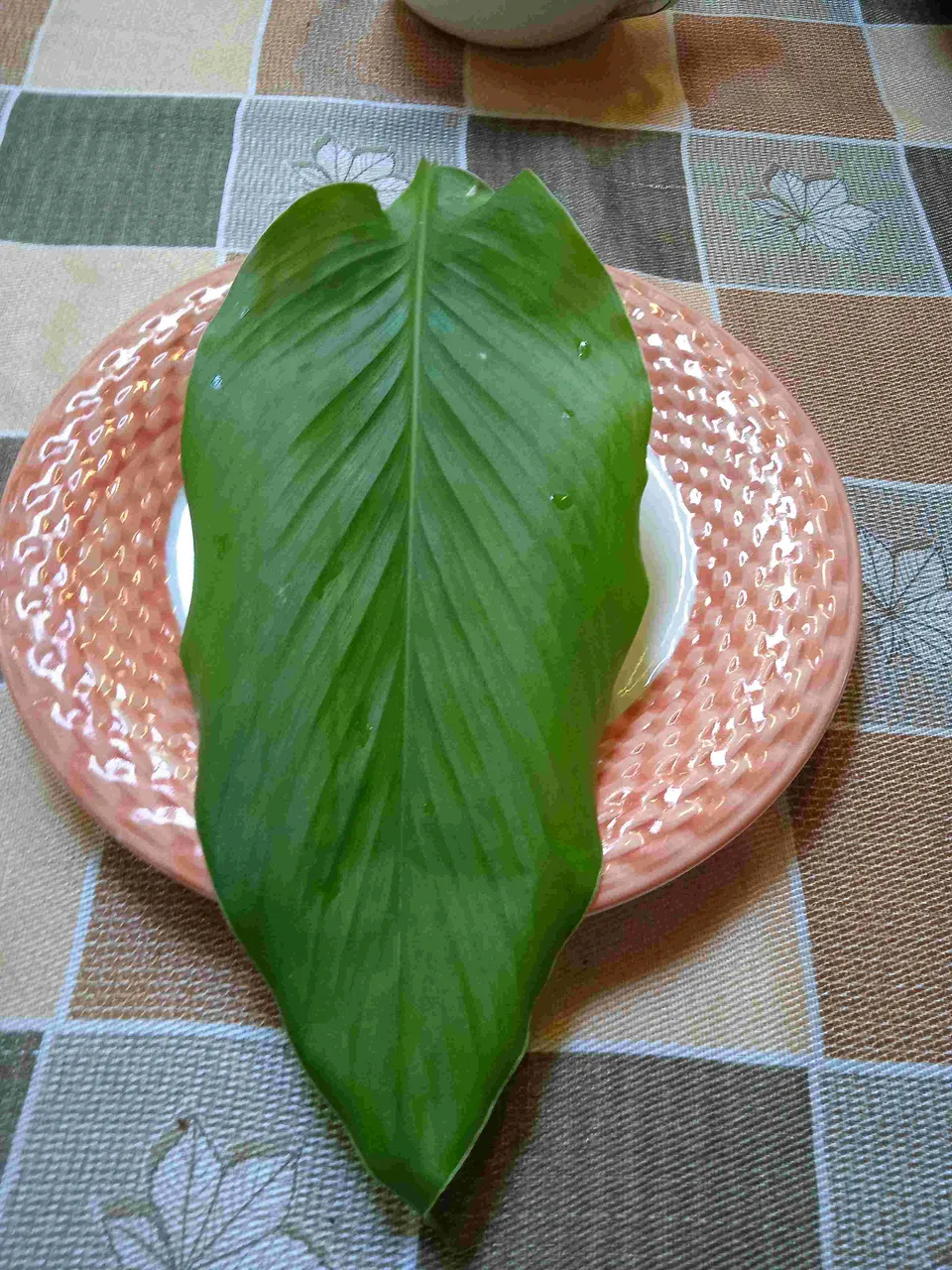
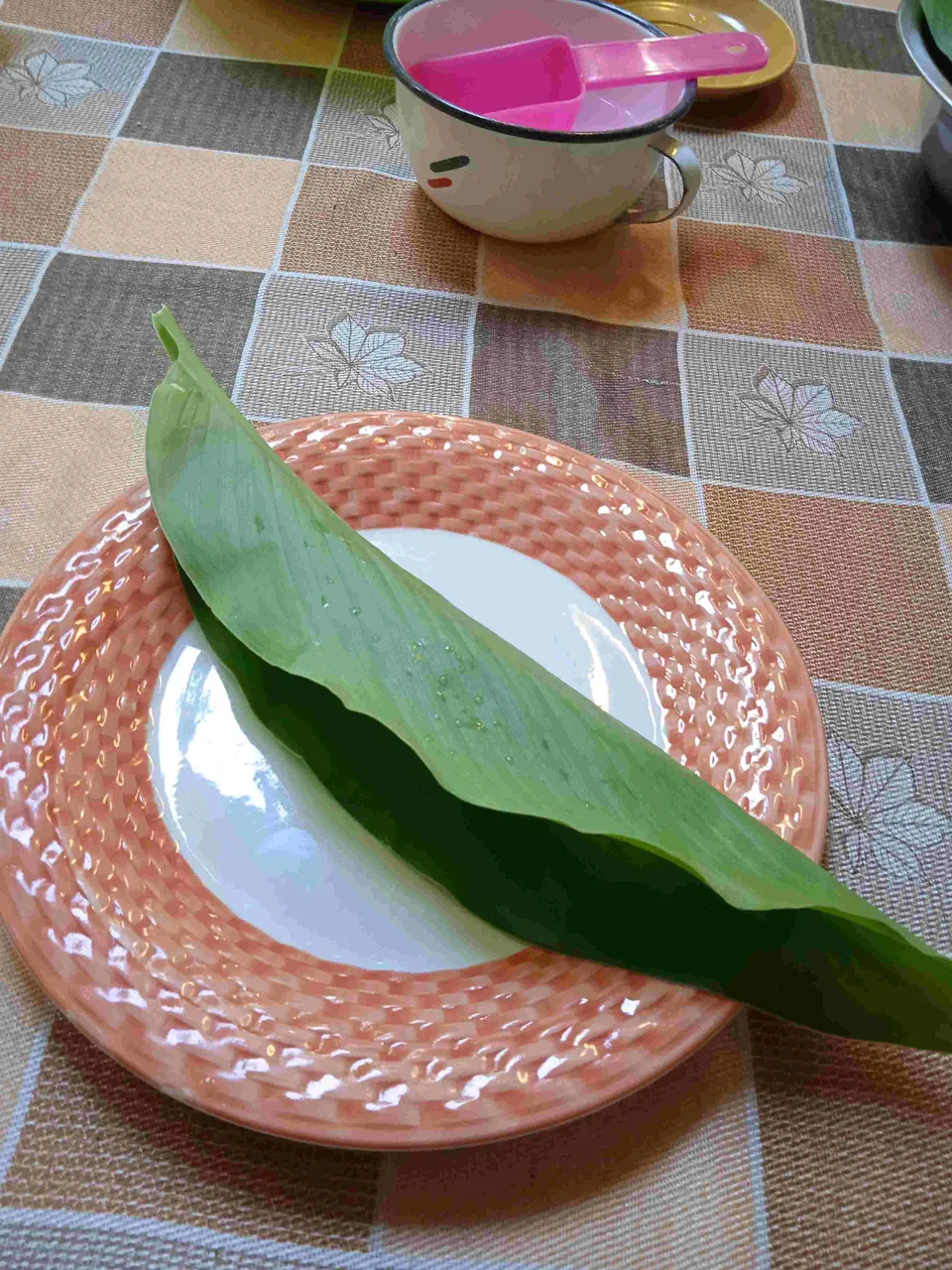
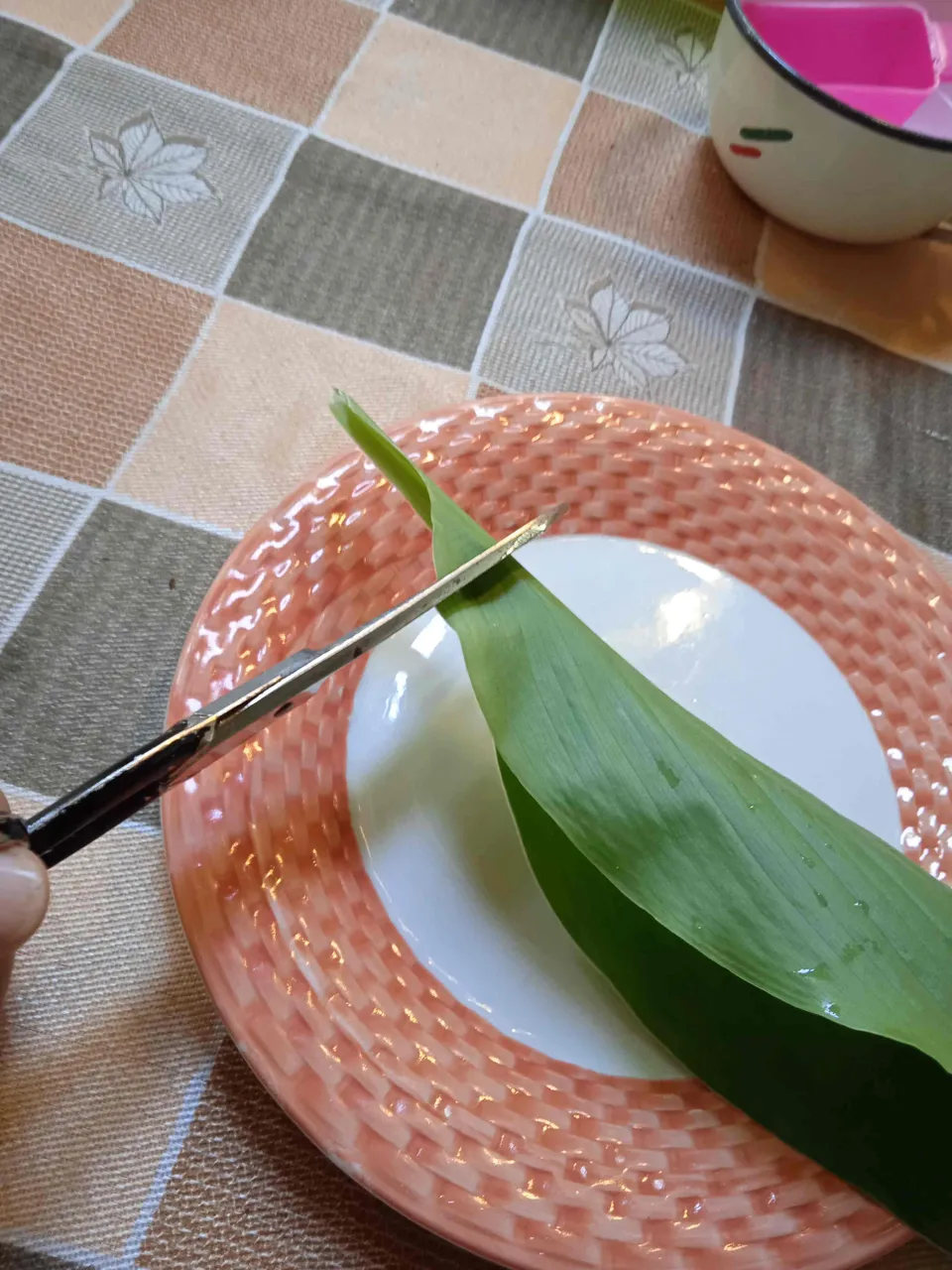
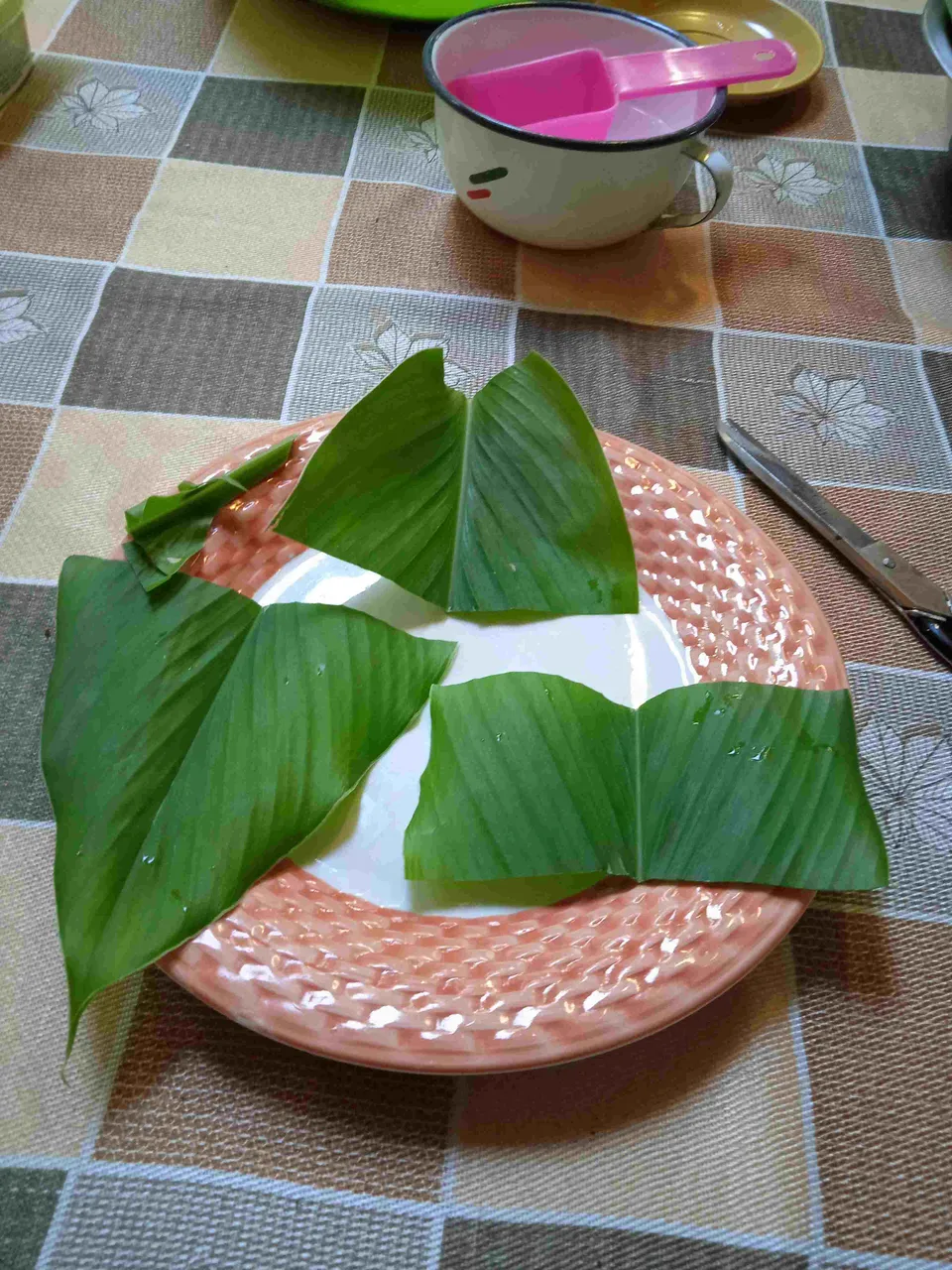

Verificar que la mezcla de piloncillo con coco esté bien integrada. Retirar del fuego. Proceder a aceitar con una servilleta las hojas de cúrcuma. Esto se hace en el haz (cara superior) de cada hoja. Luego embadurnar esa superficie con la mezcla de harina de arroz y agua, la cual está bastante suave. Se puede hacer con las manos o con una cucharilla, lo importante es que esta capa de masa sea delgada.
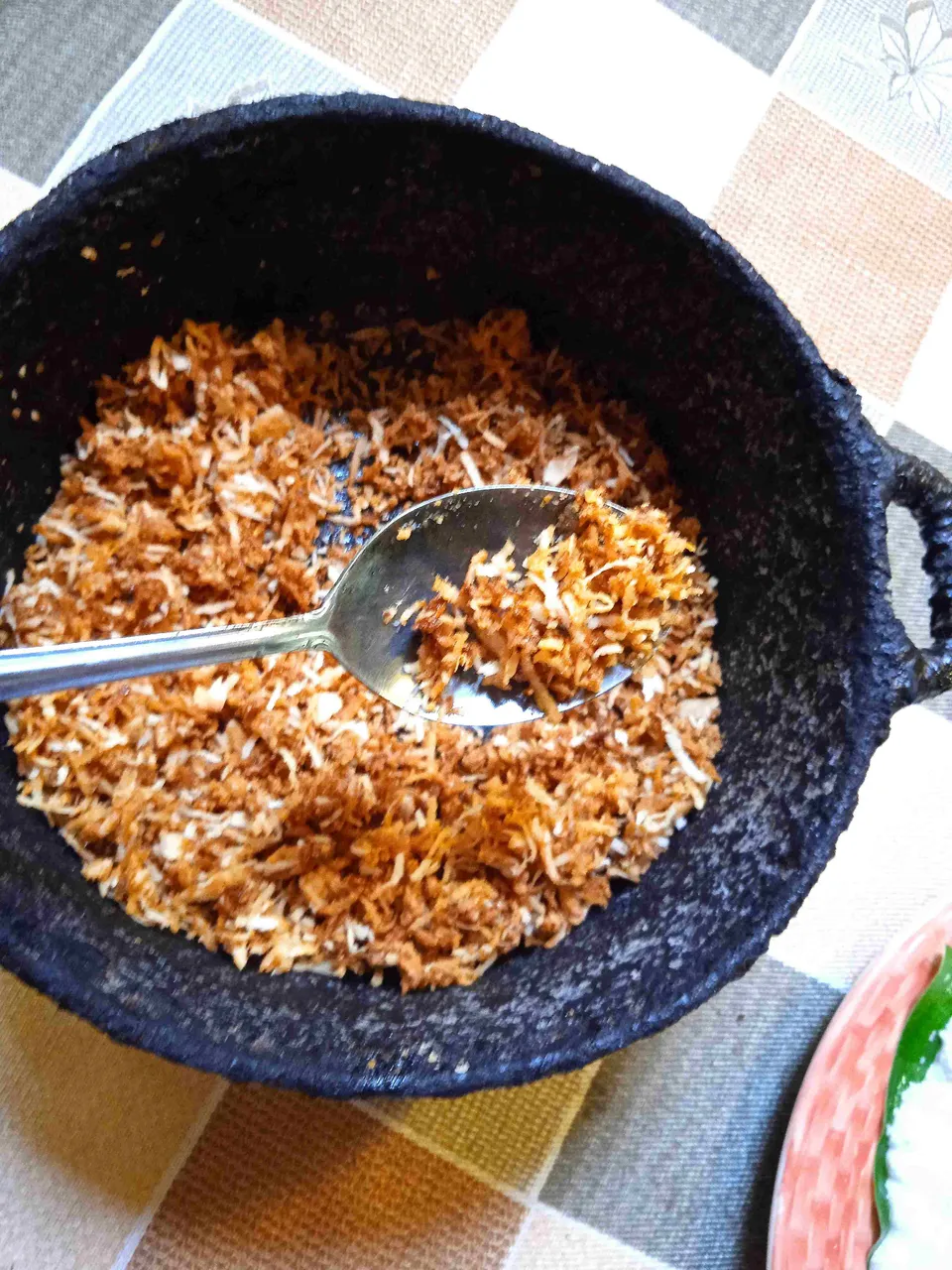
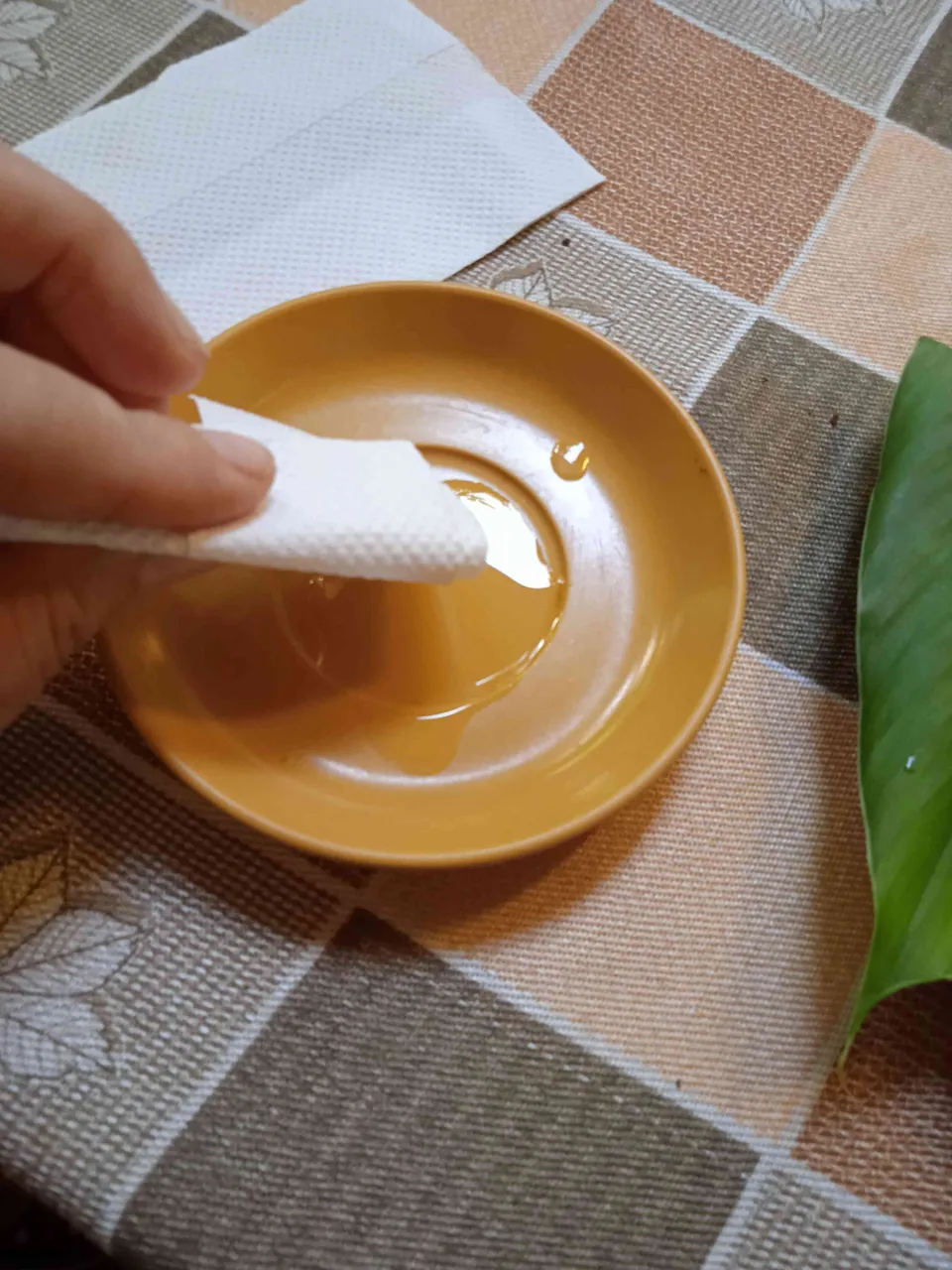
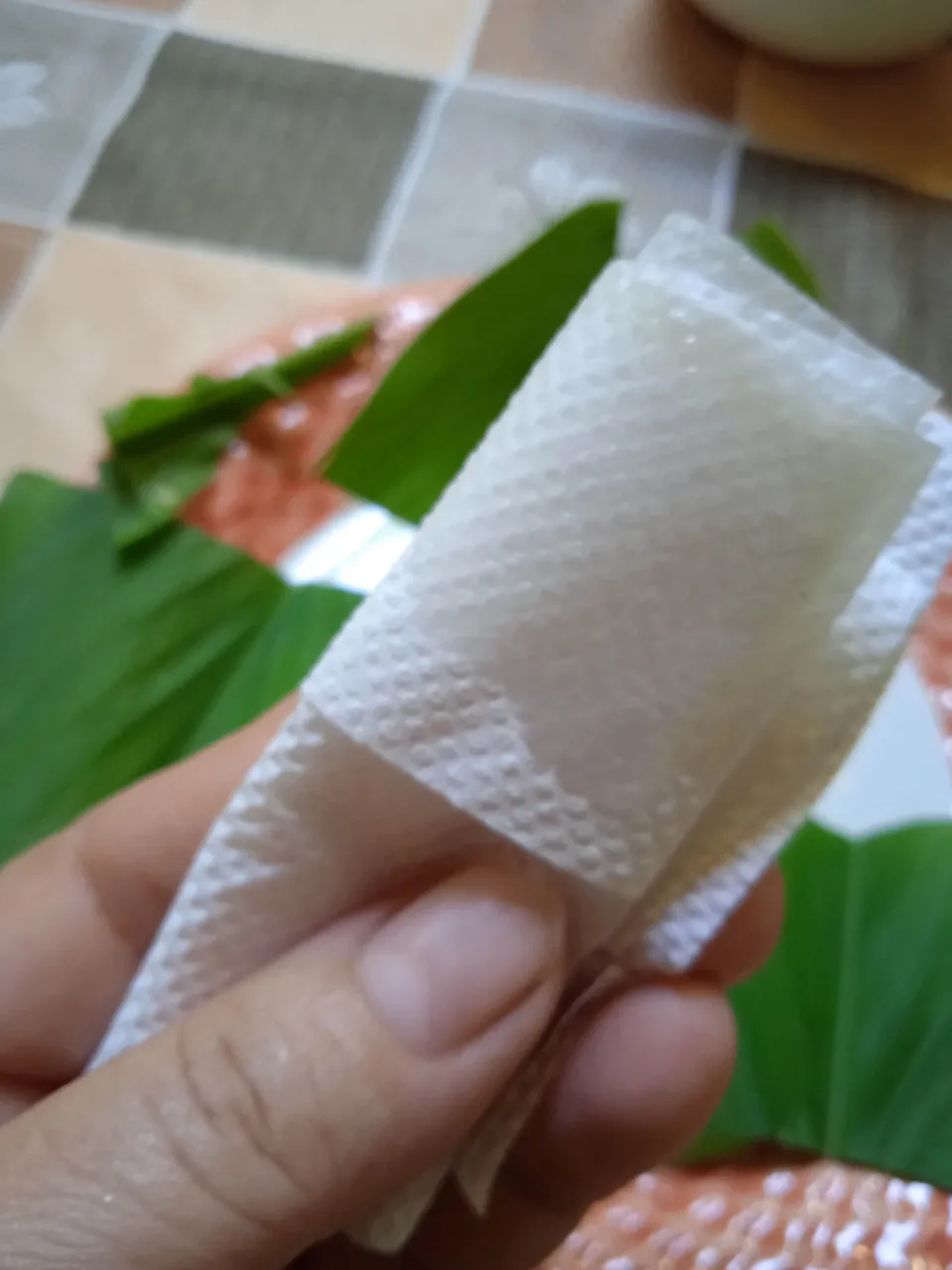
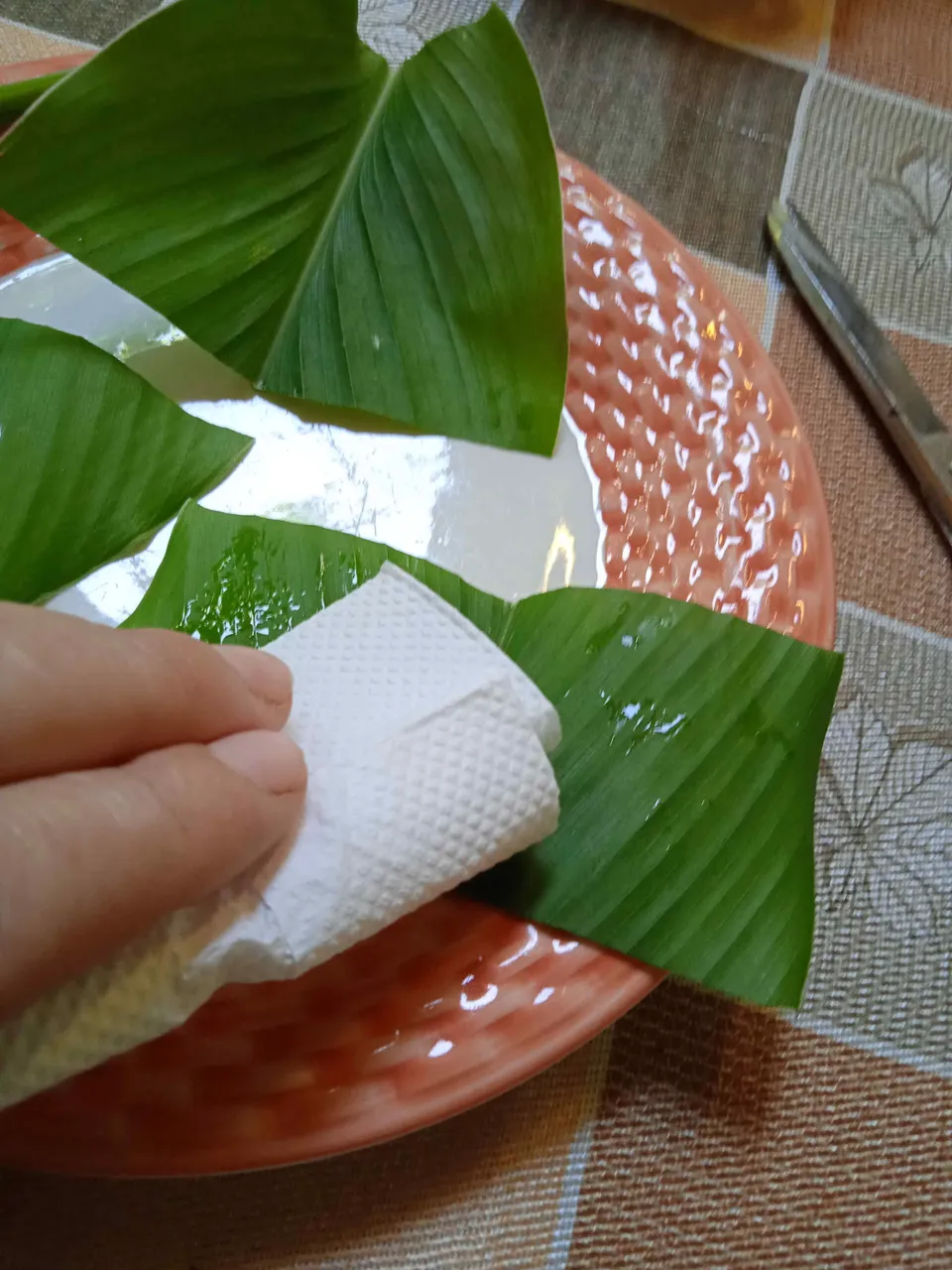
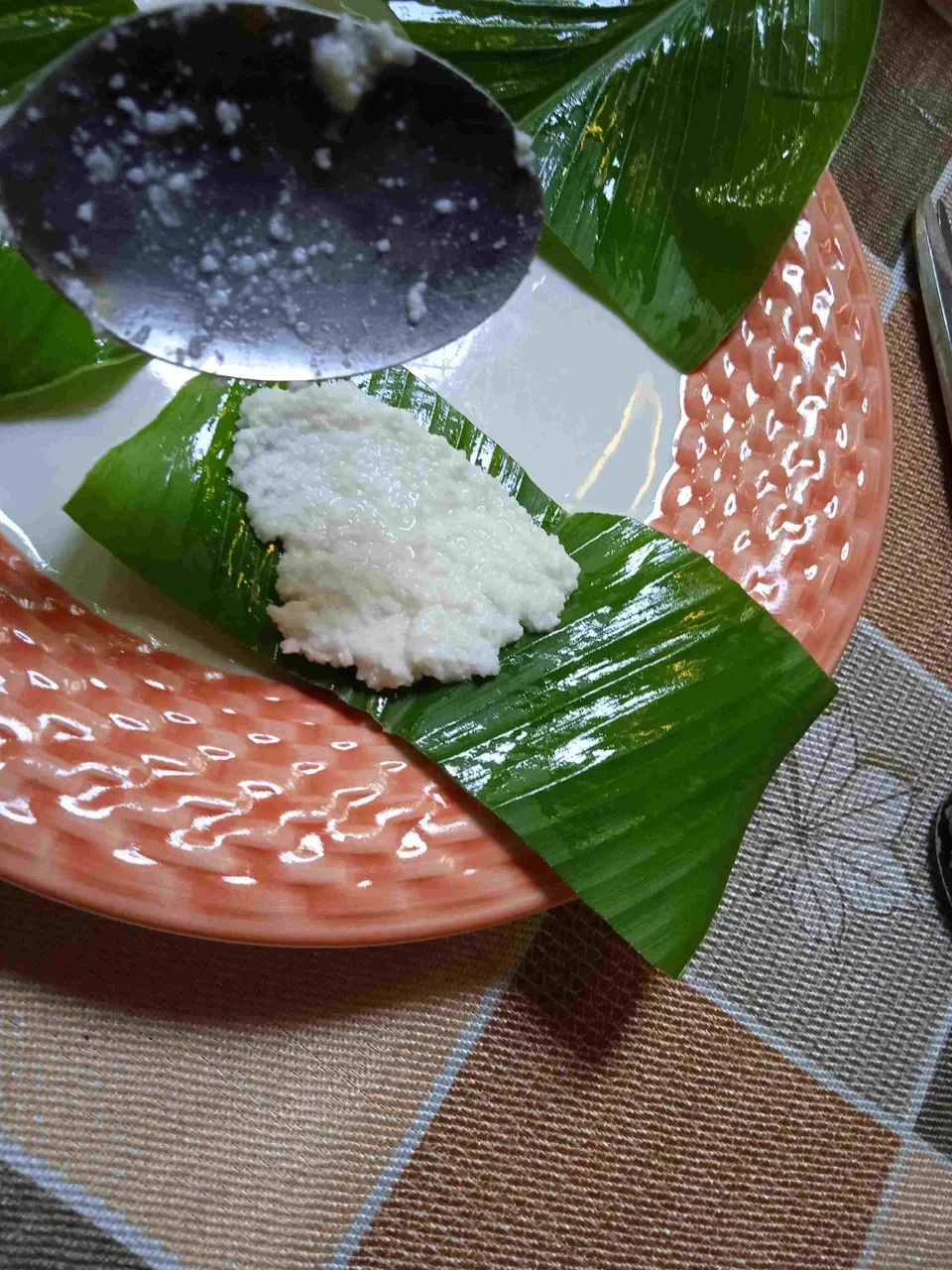

Depositar una pequeña cantidad de la mezcla de coco con piloncillo en el centro de la hoja. Doblar la hoja sobre sí misma, para hacer pequeños paquetes, estos son los patoli.
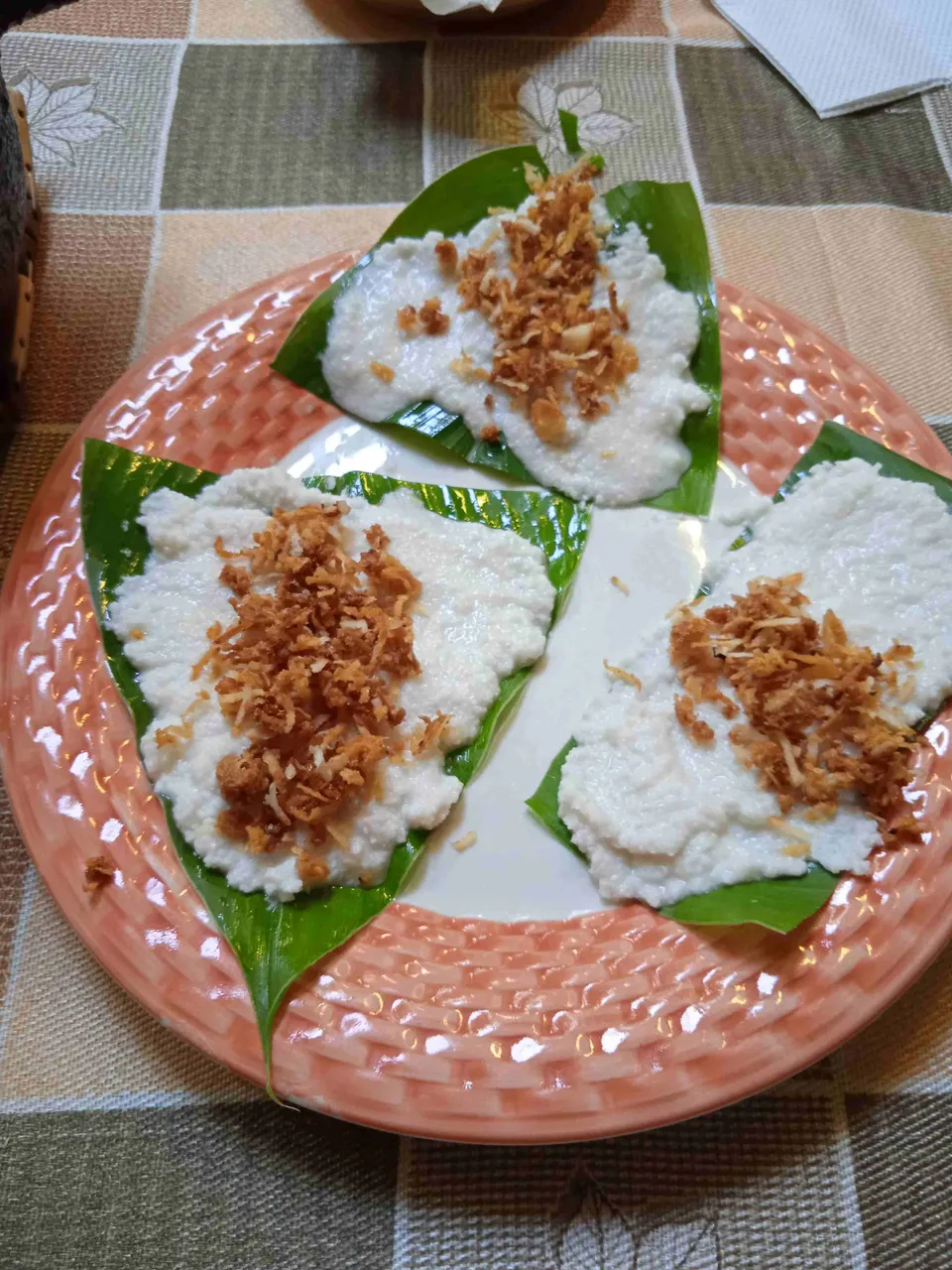
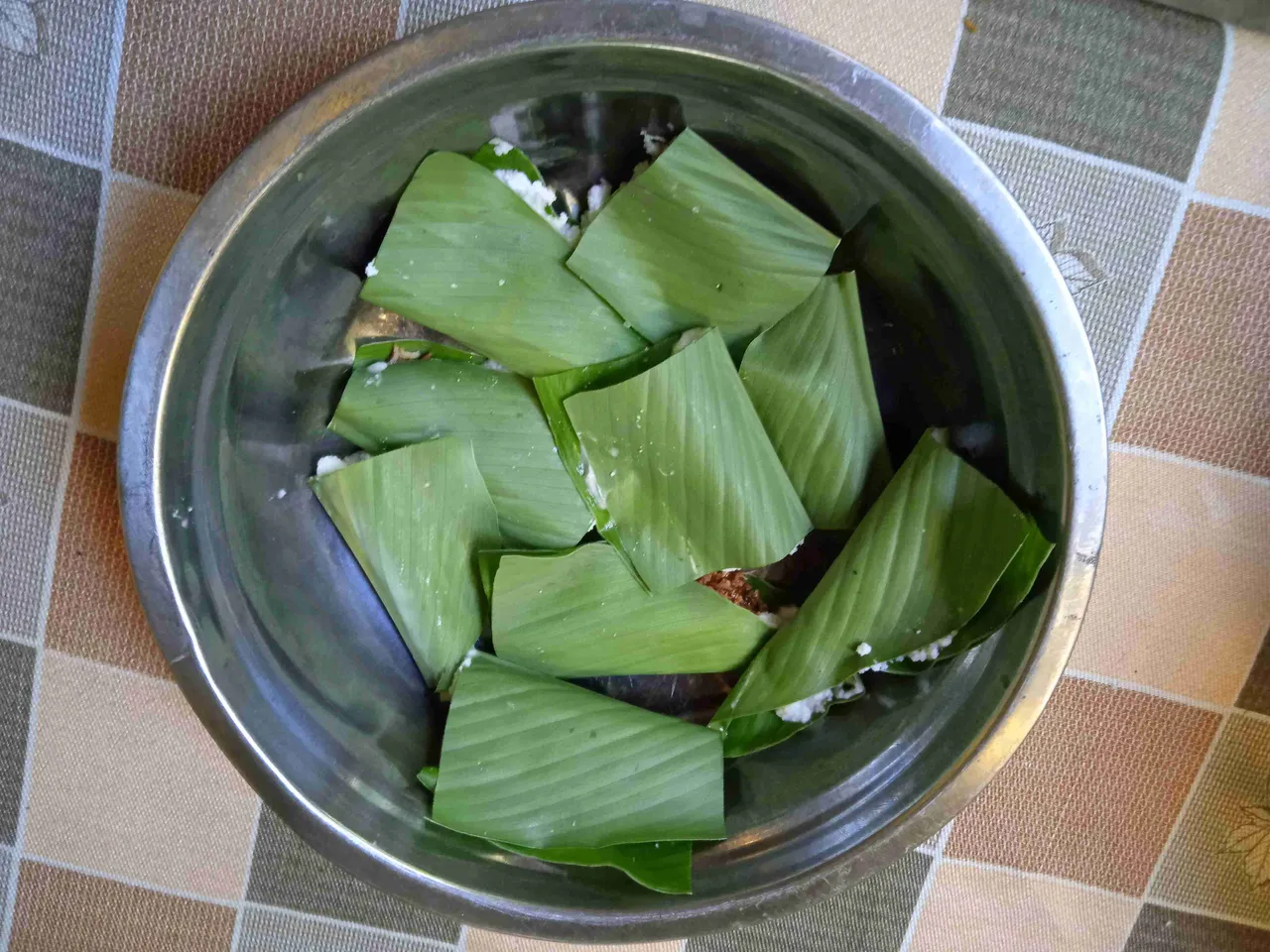

Colocar los patoli en una olla vaporera y cocinar a fuego alto por 20 minutos. Como yo no tengo olla vaporera ni tamalera, procedí a ingeniármelas, como pueden ver en las fotos. Es necesario verificar que no se agote el agua, para que se cocinen apropiadamente al vapor.
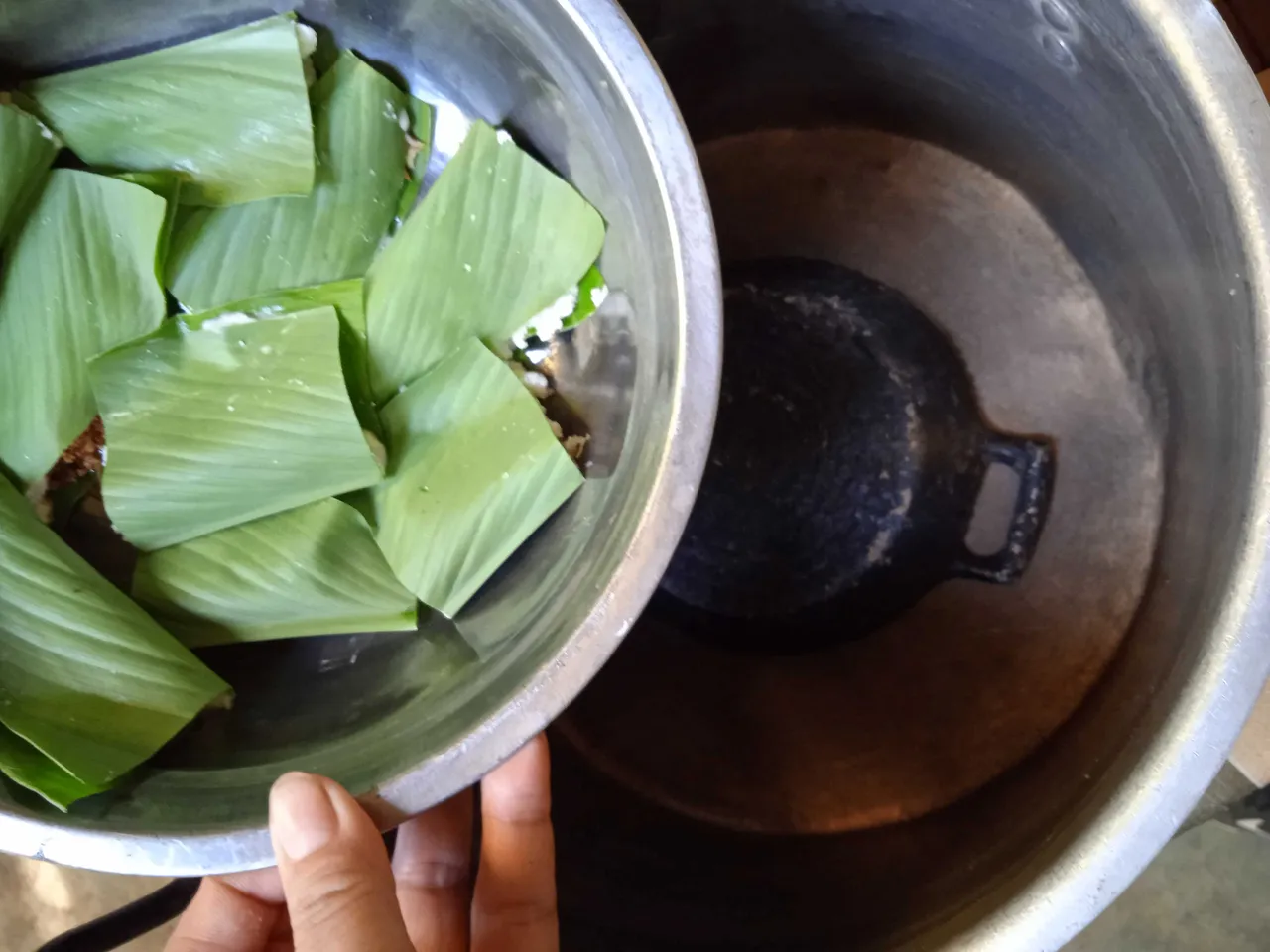
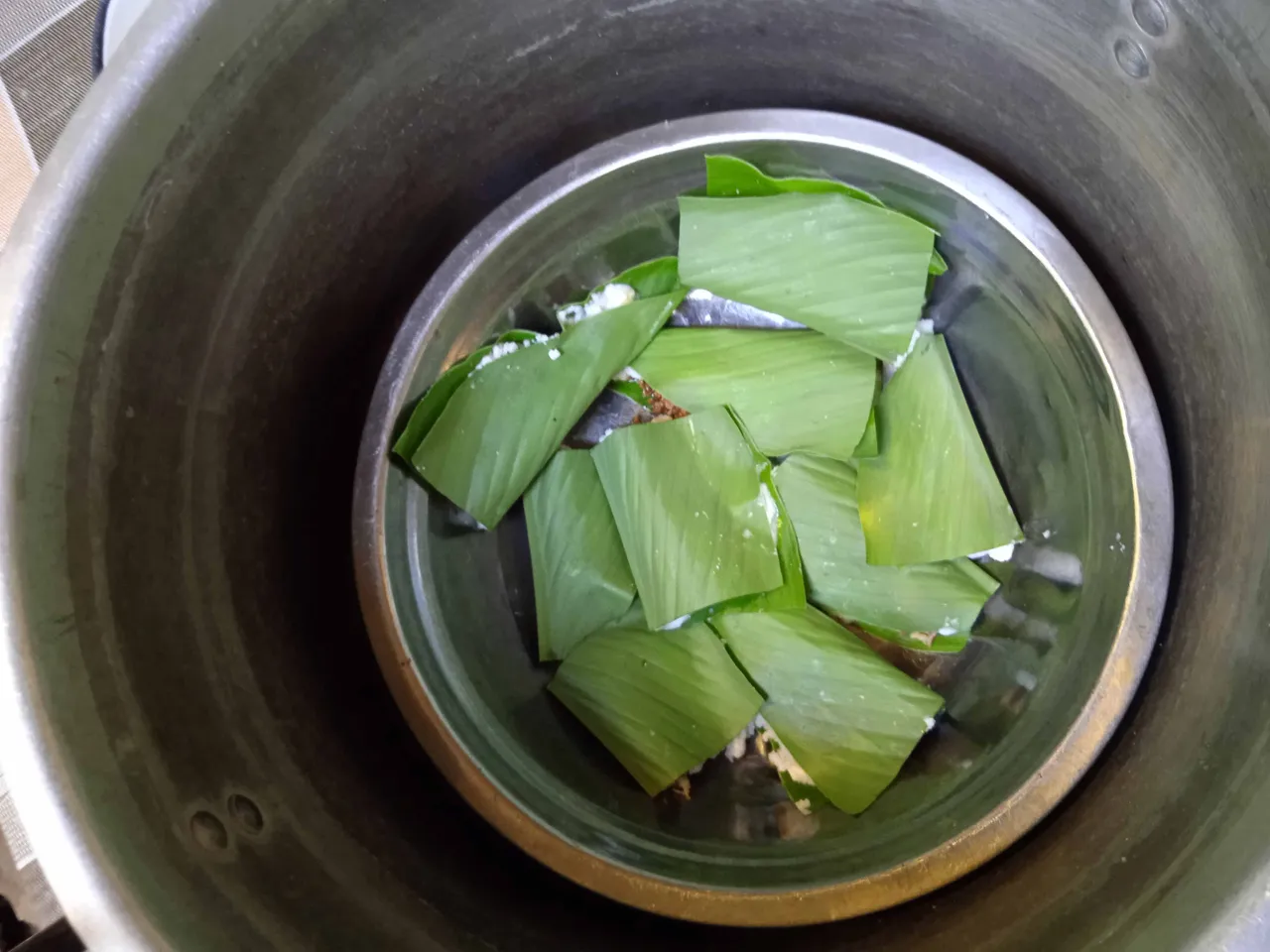
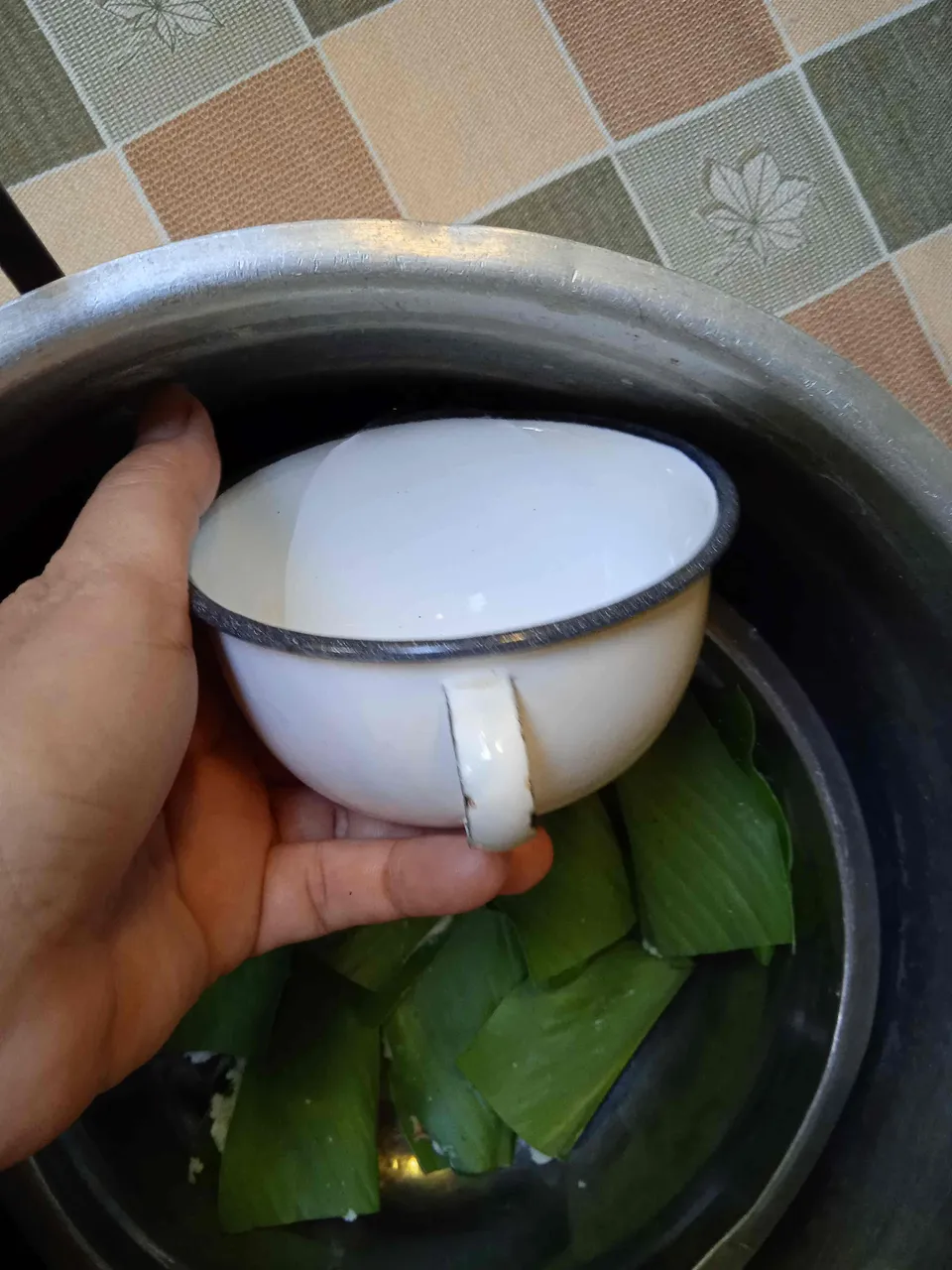
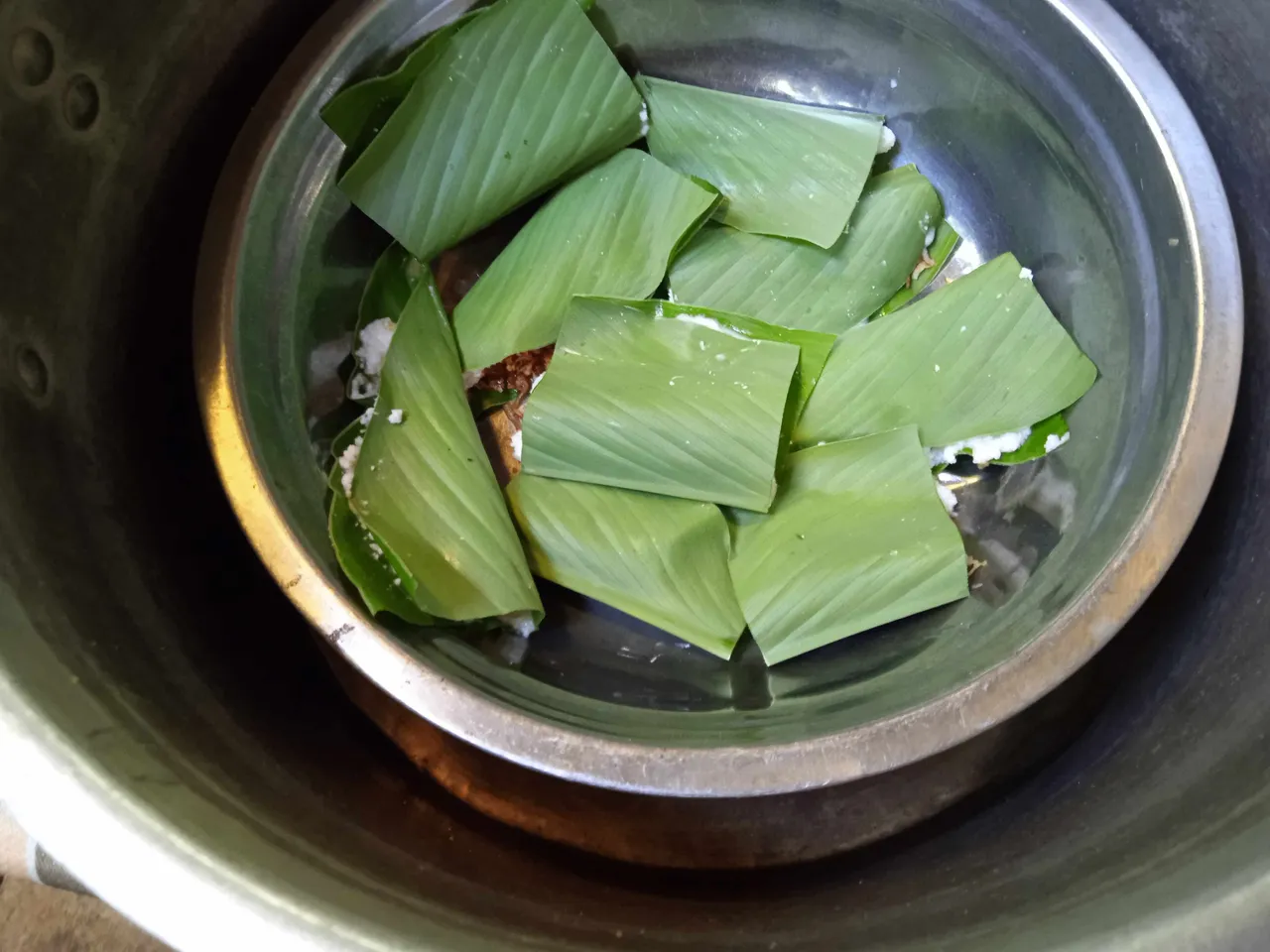

Transcurrido los 20 minutos, retirar de la vaporera y esperar a que se enfríen para poder servir. Ya están listos los patoli.
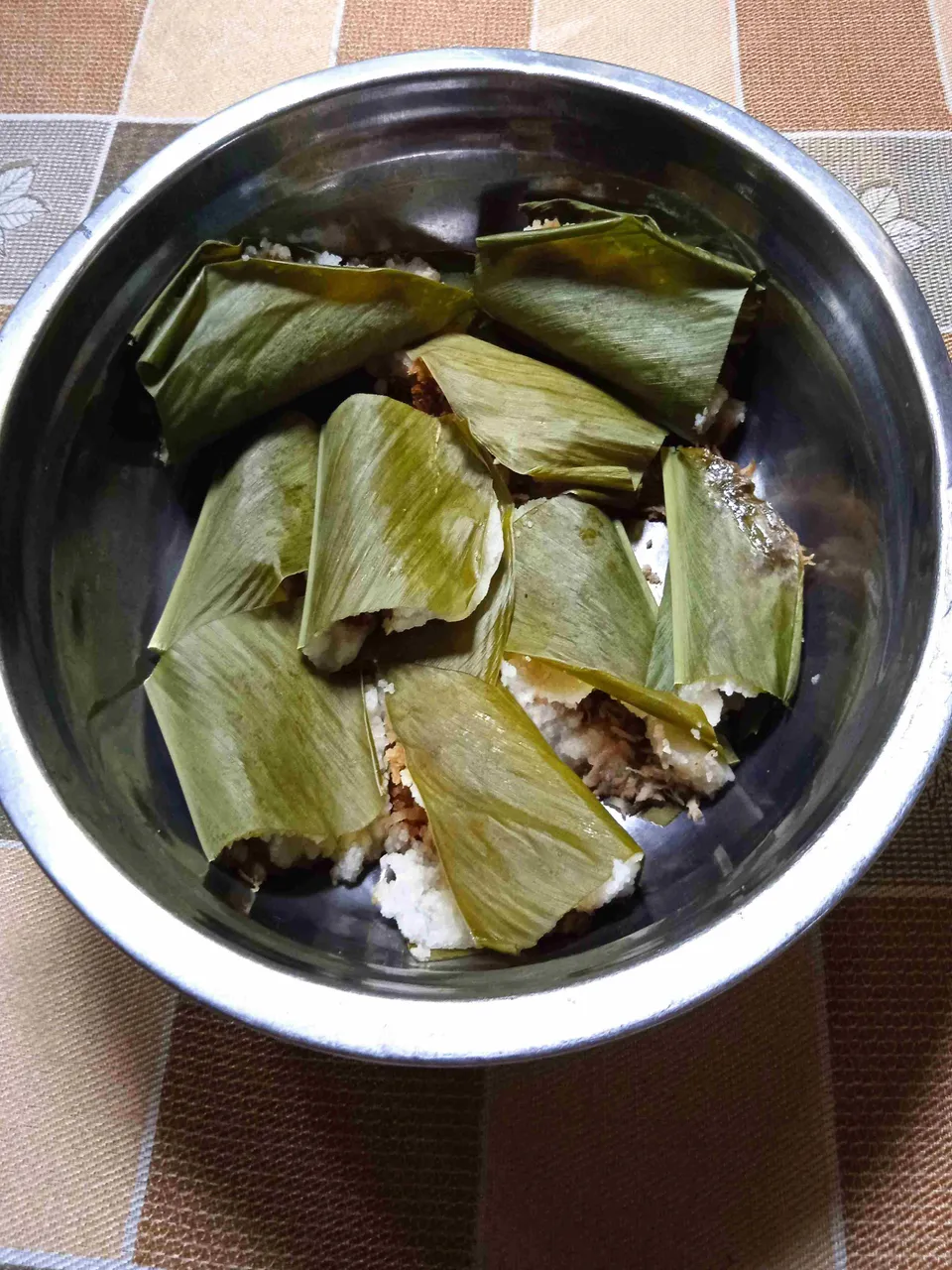
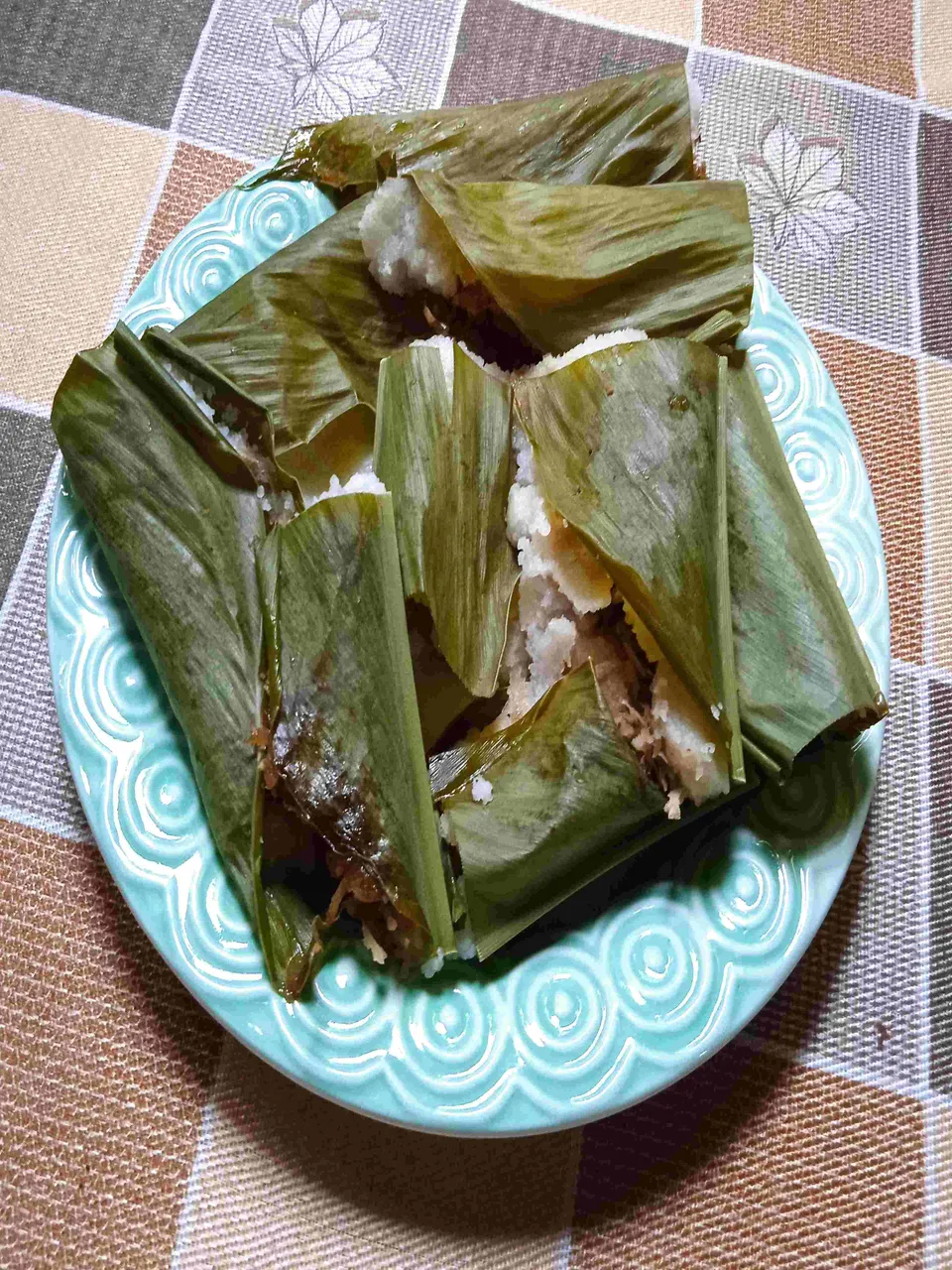

El aspecto de los patoli no es muy prolijo, de hecho, ví varios videos y fotos de esta receta, y obviamente la forma de éstos no será regular ni exacta, pues la forma la da cada trozo de hoja. Cuando recomendé usar harina de arroz de la que se compra en las tiendas, hice esta sugerencia porque considero que al moler el arroz en casa, el resultado es algo áspero o grueso. Puede que sea mi inexperiencia elaborando este snack, la calidad de la harina, o quizás el tamaño de las hojas, lo que influyó en obtener un resultado no tan prolijo. El sabor de estos snacks es muy interesante. Obviamente se evidencia la cúrcuma, pero armoniza muy bien con el relleno que es delicioso. La masa es algo neutra, pero sirve de amalgama entre la cúrcuma y el delicioso relleno de coco con piloncillo. Es un snack que puede tomarse con café, té, horchata, infusión, es bastante versátil. Solo resta decir: ¡Buen provecho!
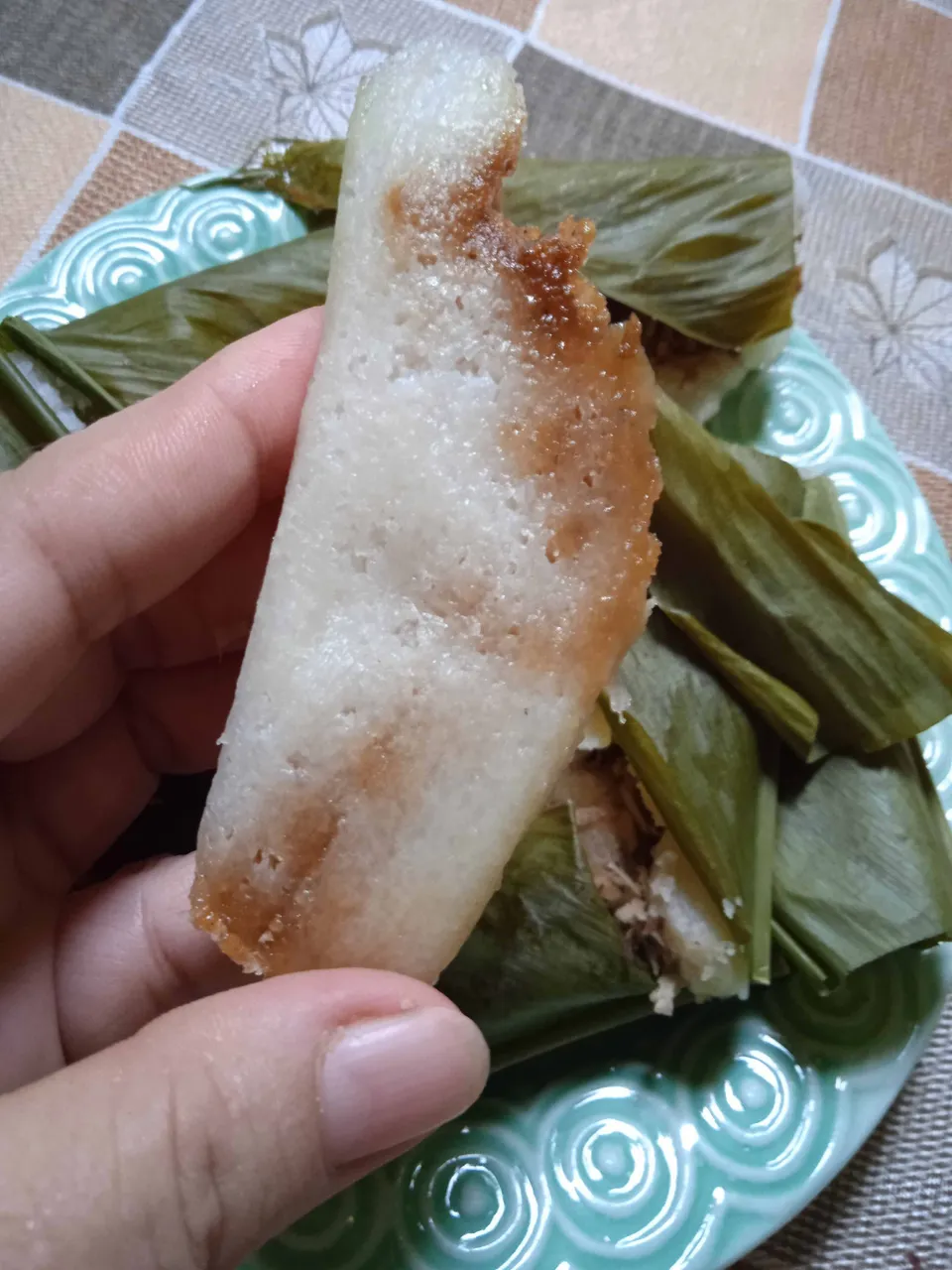
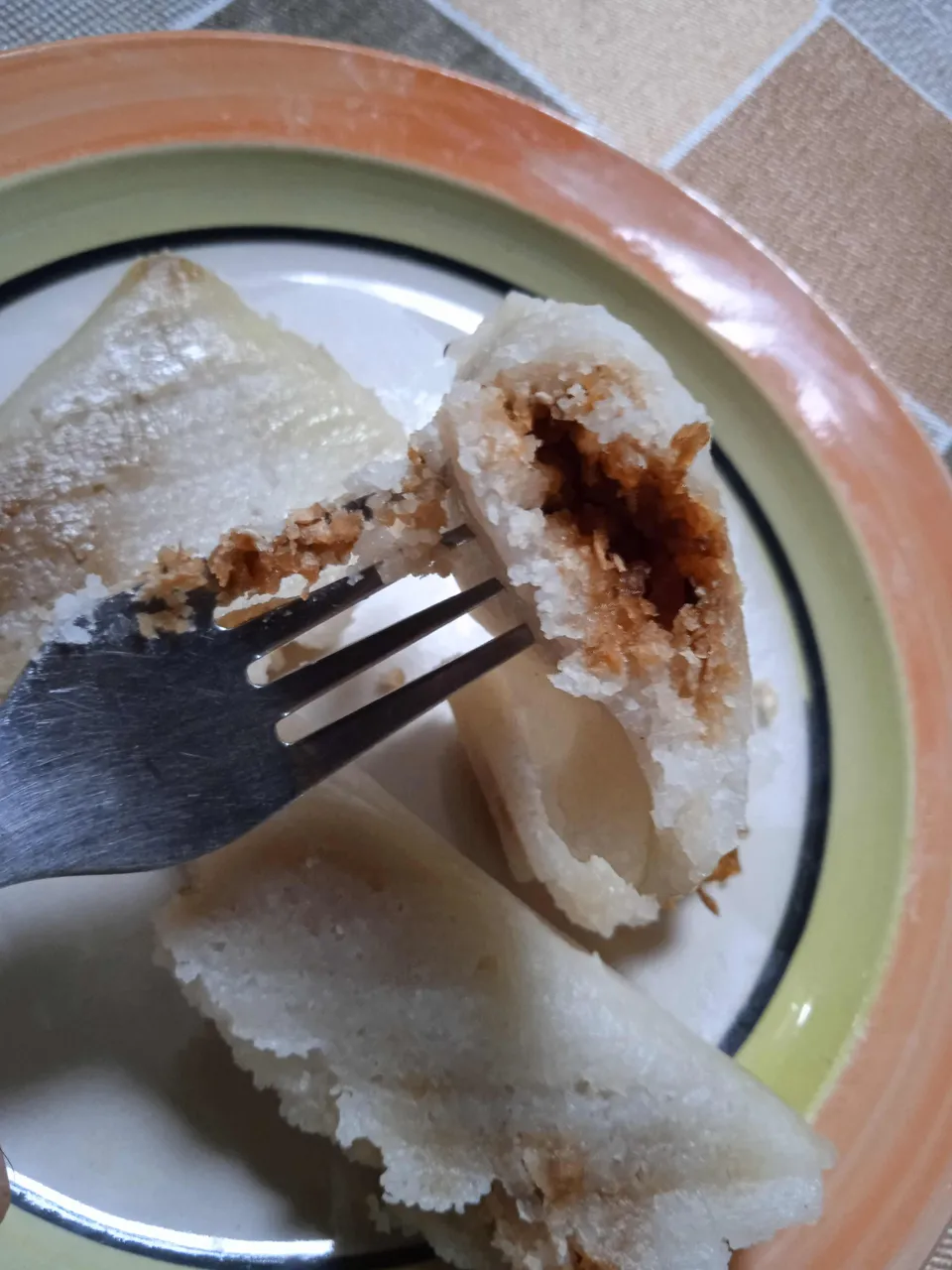

Aquí termino mi post de hoy, en el cual he experimentado con una receta que es ajena a mi cultura. Quizás el resultado no fue estupendo, pero aprendí un poquito de la gastronomía hindú, la cual es muy amplia y maravillosa. Espero que investiguen, se documente, lean y se animen a seguir haciendo recetas veganas, que son deliciosas, nutritivas y compasivas con la Madre Tierra.

These photos are my own, and were taken with a Xiaomi REDMI 8 A phone / Estas fotos son de mi propiedad, y las tome con un smarthone Xiaomi REDMI 8 A
This time I'm using a divider that @doriangel gave me last year. Thank you very much for this beautiful gift. / En esta ocasión estoy usando un divisor que me obsequió @doriangel el año pasado. Muchas gracias por este bello regalo.
In case it is required to use the content or images of this post and of my other publications, I would appreciate if you could refer to my authorship (Fabiola Martínez) and cite the corresponding link. Thanks. / En caso de se requiera utilizar el contenido o imágenes de este post o de alguna de mis otras publicaciones, agradecería que se hiciera referencia a mi autoría (Fabiola Martínez) y se cite el link correspondiente. Gracias.


 Delegations welcome!
Delegations welcome!


